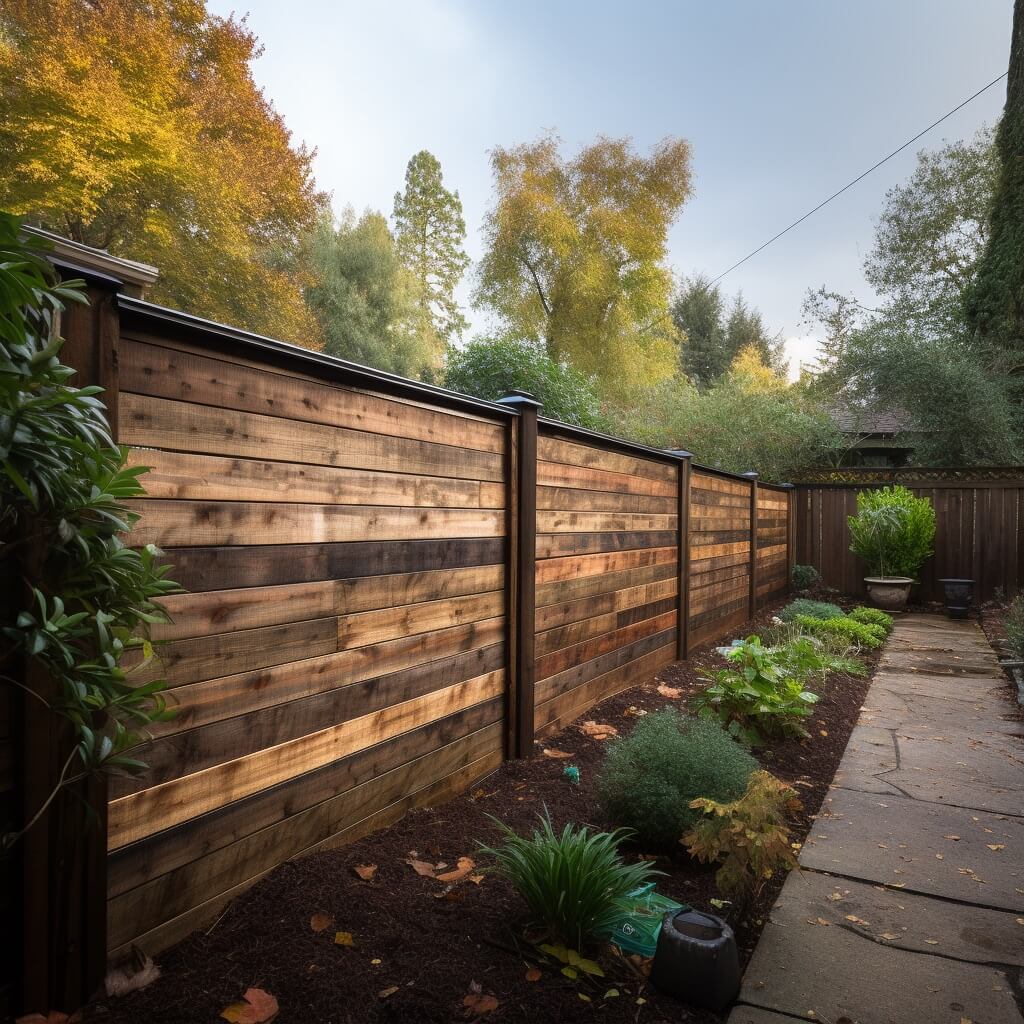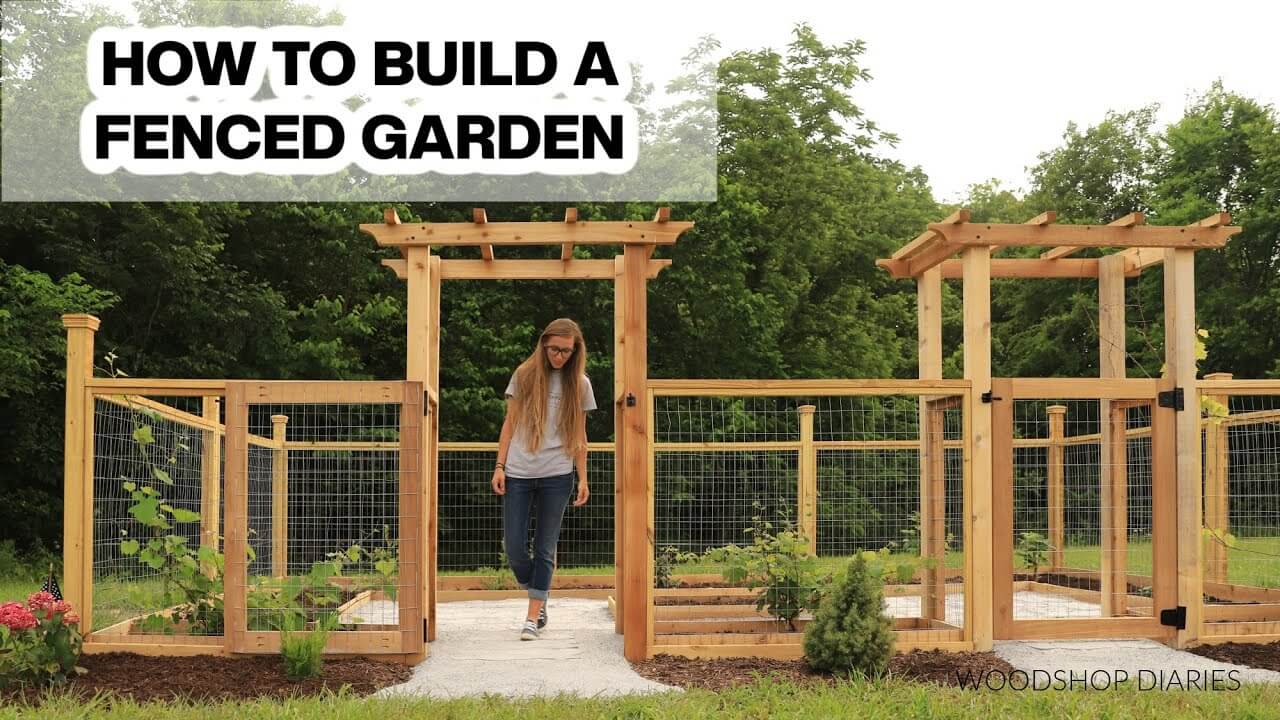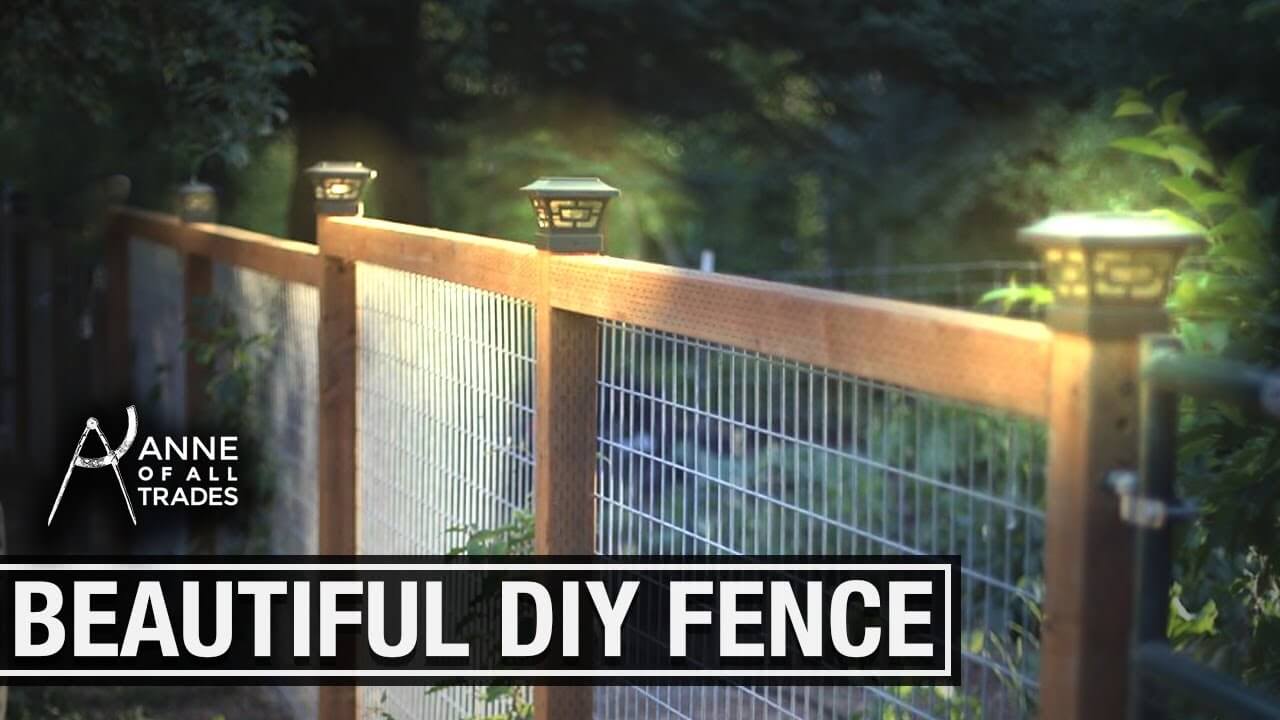30 Easy DIY Garden Fence Ideas and Plans
Every garden tells a story, and the fence we choose sets the stage. Crafting that perfect boundary has always been a passion of mine, blending both form and function.
Whether you’re aiming to protect your cherished plants or seeking to elevate your outdoor aesthetic, the right fence can be a game-changer. In this guide, I’ll share 30 handpicked DIY garden fence ideas and plans, each with its own unique flair.
From the simplest designs to the most intricate, there’s something here for every green thumb. Ready to embark on this transformative journey with me? Let the adventure begin!
DIY Garden Fence Ideas with Cheap DIY Fence Plans
1 | DIY Oak Wood Garden Fence
Oak wood has long been revered for its strength, durability, and timeless beauty. When it comes to crafting a garden fence, oak stands out as a top choice for those seeking both elegance and resilience. Its rich, warm tones naturally complement any garden setting, from vibrant flower beds to lush green lawns. Over time, oak wood develops a patina, a gentle weathered look that adds a touch of rustic charm. This natural aging process means your fence will evolve with your garden, creating a dynamic landscape that’s ever-changing and always captivating.
But it’s not just about aesthetics. Oak wood is naturally resistant to pests and decay, making it an ideal material for outdoor projects. When constructing your DIY oak wood garden fence, consider using vertical slats for a contemporary look or traditional pickets for a more classic appeal. Incorporate decorative post caps or intertwine climbing plants to add a personal touch. With the right care, an oak wood fence can last for decades, standing as a testament to your craftsmanship and the enduring beauty of nature.
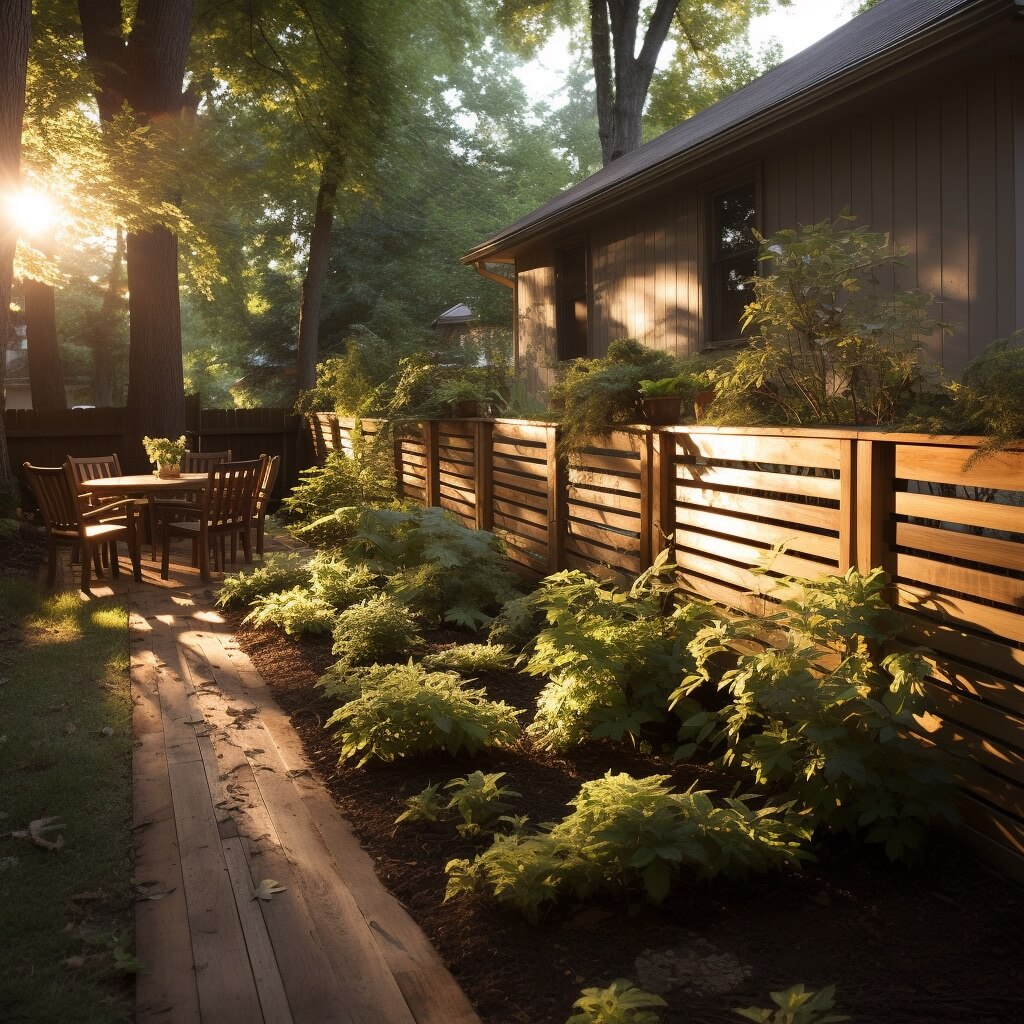
2 | Cypress DIY Small Garden Fence
Cypress, with its subtle grain patterns and soft hues, offers a unique blend of sophistication and versatility. Especially suited for smaller gardens, a cypress fence can create an intimate ambiance, turning compact spaces into cozy retreats. Its lightweight nature makes it a dream to work with, allowing for intricate designs and detailing. Whether you’re envisioning a quaint picket style or a more modern louvered design, cypress adapts beautifully, enhancing the character of your garden.
Beyond its visual appeal, cypress boasts inherent properties that make it a practical choice for outdoor projects. It’s naturally resistant to termites and moisture, reducing the need for chemical treatments and ensuring longevity. When crafting your DIY small garden fence, think of cypress as a canvas, ready to be molded to your vision. Perhaps add a lattice top for climbing roses or incorporate a gate with ornate ironwork. With cypress, your small garden fence won’t just be a boundary; it’ll be a centerpiece.
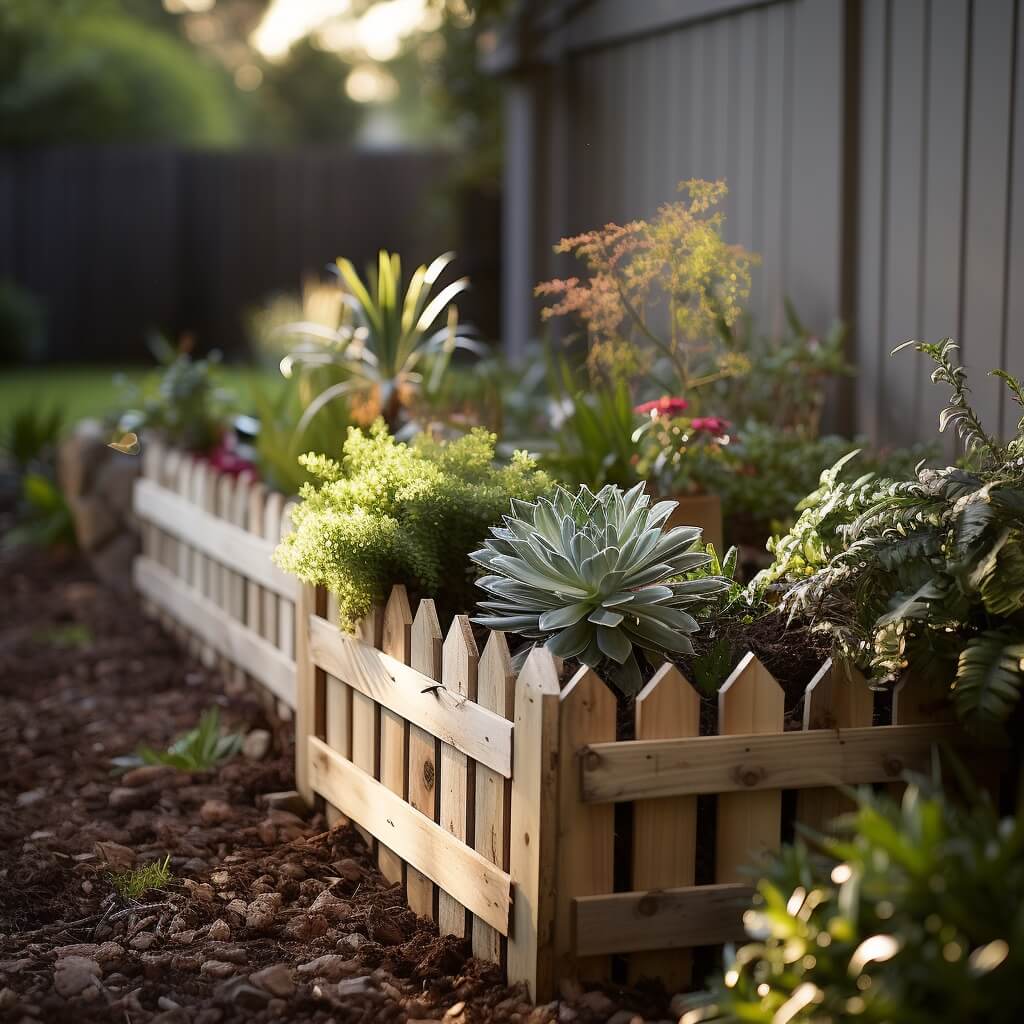
3 | DIY Garden Fence Panels
Garden fence panels are the unsung heroes of backyard transformations. These pre-assembled sections offer a streamlined approach to fencing, allowing even novice DIY enthusiasts to achieve professional-looking results. The beauty of fence panels lies in their modularity. You can mix and match different styles, textures, and materials, creating a fence that’s truly reflective of your personal aesthetic. Imagine combining a sleek metal panel with a rustic wooden one, or interspersing solid panels with those that have decorative cut-outs. The possibilities are as vast as your imagination.
Opting for DIY garden fence panels also brings a practical advantage: efficiency. Since they come pre-assembled, the installation process is significantly expedited. This means you spend less time measuring, cutting, and aligning, and more time enjoying the fruits of your labor. To add a touch of flair, consider painting individual panels in complementary colors or adorning them with outdoor-friendly artwork. In the world of DIY garden fencing, panels are your ticket to a quick yet impactful backyard makeover.
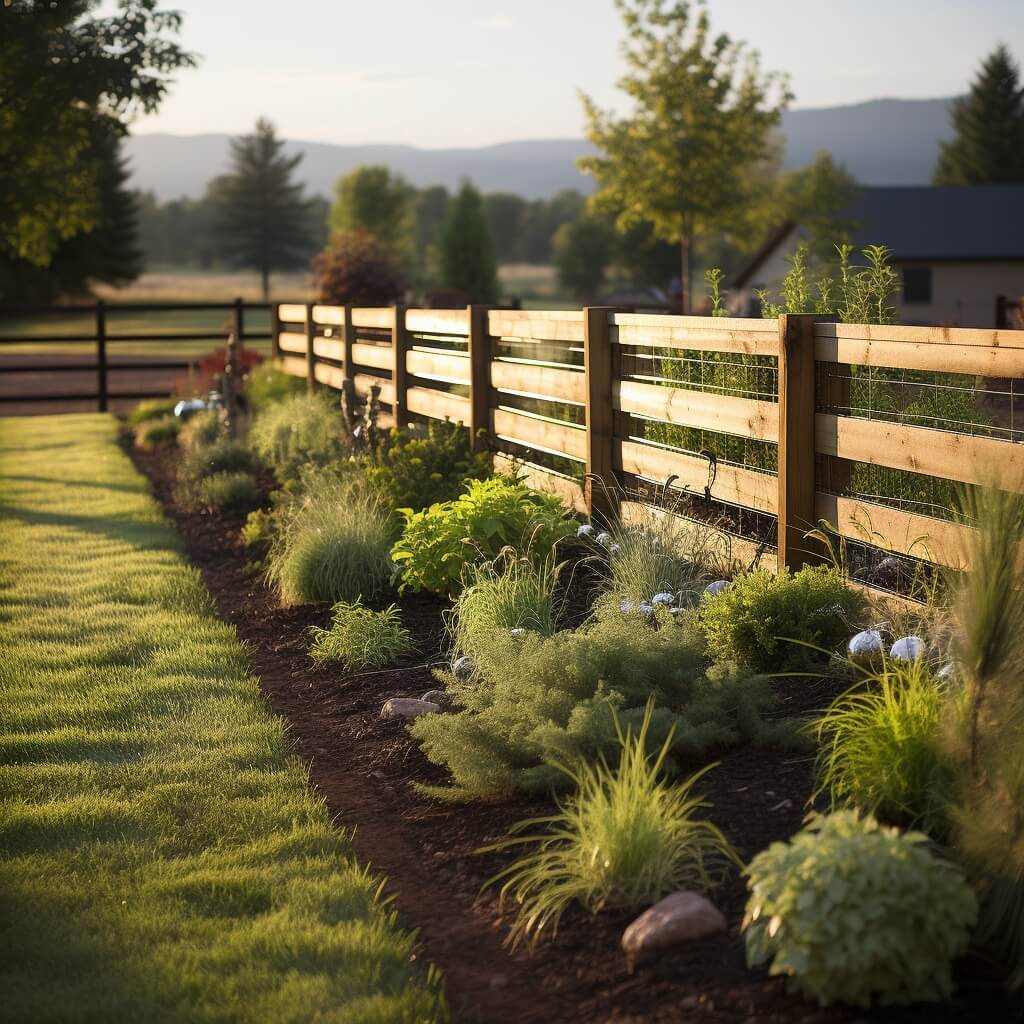
4 | DIY Pallet Fence
There’s a certain charm in repurposing materials, and pallets are a testament to this ethos. These humble wooden structures, often discarded after their initial use, can be transformed into stunning garden fences with a bit of creativity. A DIY pallet fence is not only eco-friendly but also offers a rustic, bohemian vibe that’s hard to replicate with other materials. Each pallet carries its own history, and when pieced together, they tell a story of sustainability and ingenuity. Whether left in their natural state or painted in vibrant hues, pallet fences can be tailored to suit any garden theme.
But the allure of a pallet fence isn’t just aesthetic. From a practical standpoint, pallets are readily available and often free, making this a budget-friendly fencing option. Their sturdy construction ensures durability, while the spaces between slats of rail fence are perfect for weaving in plants or string lights. If you’re looking to embark on a DIY project that marries form, function, and sustainability, a pallet fence is a brilliant choice. Each plank and nail you use showcases your commitment to sustainability and ingenuity.
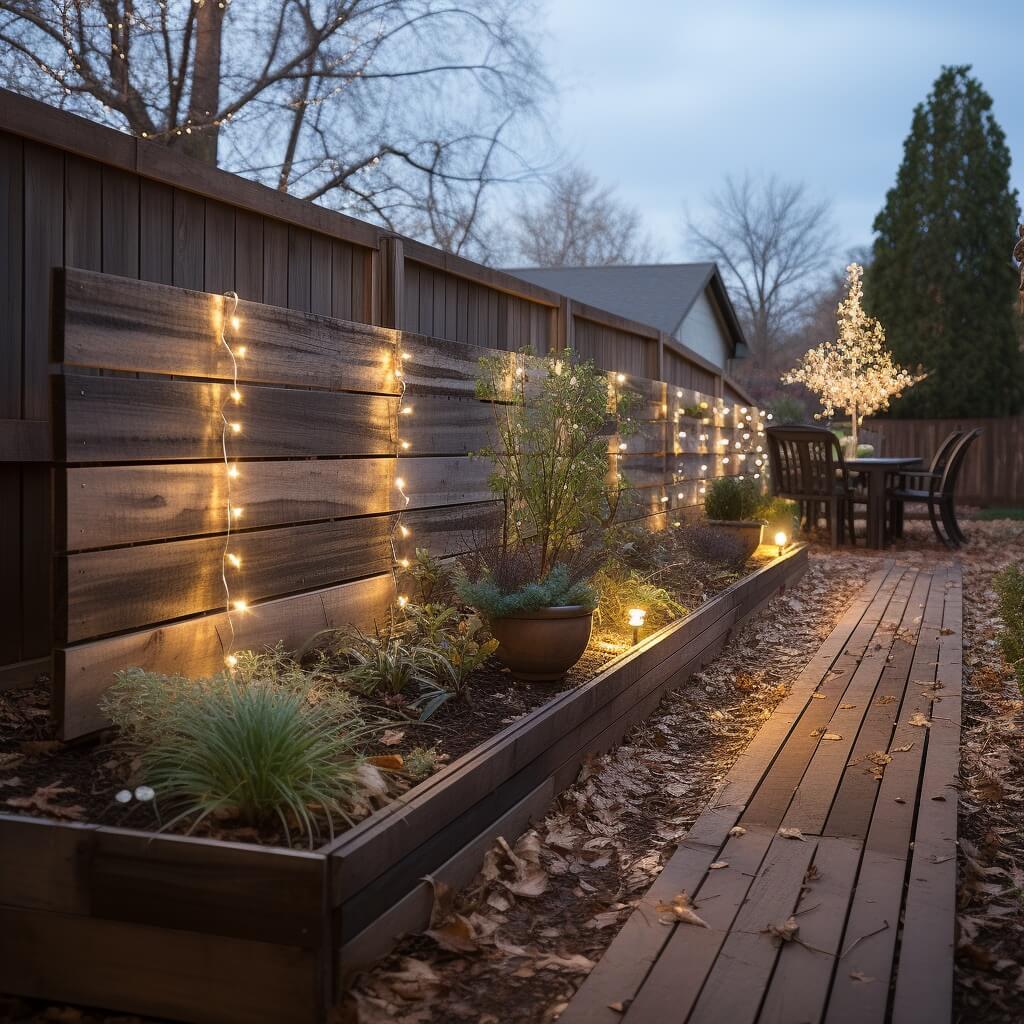
5 | DIY Garden Fence for Dogs
For those of us with furry companions, ensuring their safety while letting them enjoy the outdoors becomes a top priority. A DIY garden fence tailored for dogs serves this dual purpose, acting as a protective boundary while also enhancing the aesthetics of your outdoor space. The key is to design a fence that’s both escape-proof and visually appealing. Opt for materials that are sturdy and durable, ensuring that even the most adventurous pup won’t find a way out. Consider adding a mesh backing or a reinforced base to prevent digging, and ensure the height is adequate for your dog’s size and jumping capabilities.
Beyond the functional aspects, there’s ample room for creativity. Personalize your fence with dog-themed ornaments, or carve out a small viewing panel at your dog’s eye level, allowing them to watch the world go by. Incorporate gates with secure latches, and perhaps even a dedicated doggy entrance. Plant dog-friendly shrubs and flowers along the fence line, creating a sensory haven for your pet. With a DIY garden fence for dogs, you’re not just building a barrier; you’re crafting a safe and stimulating playground for your four-legged family member.
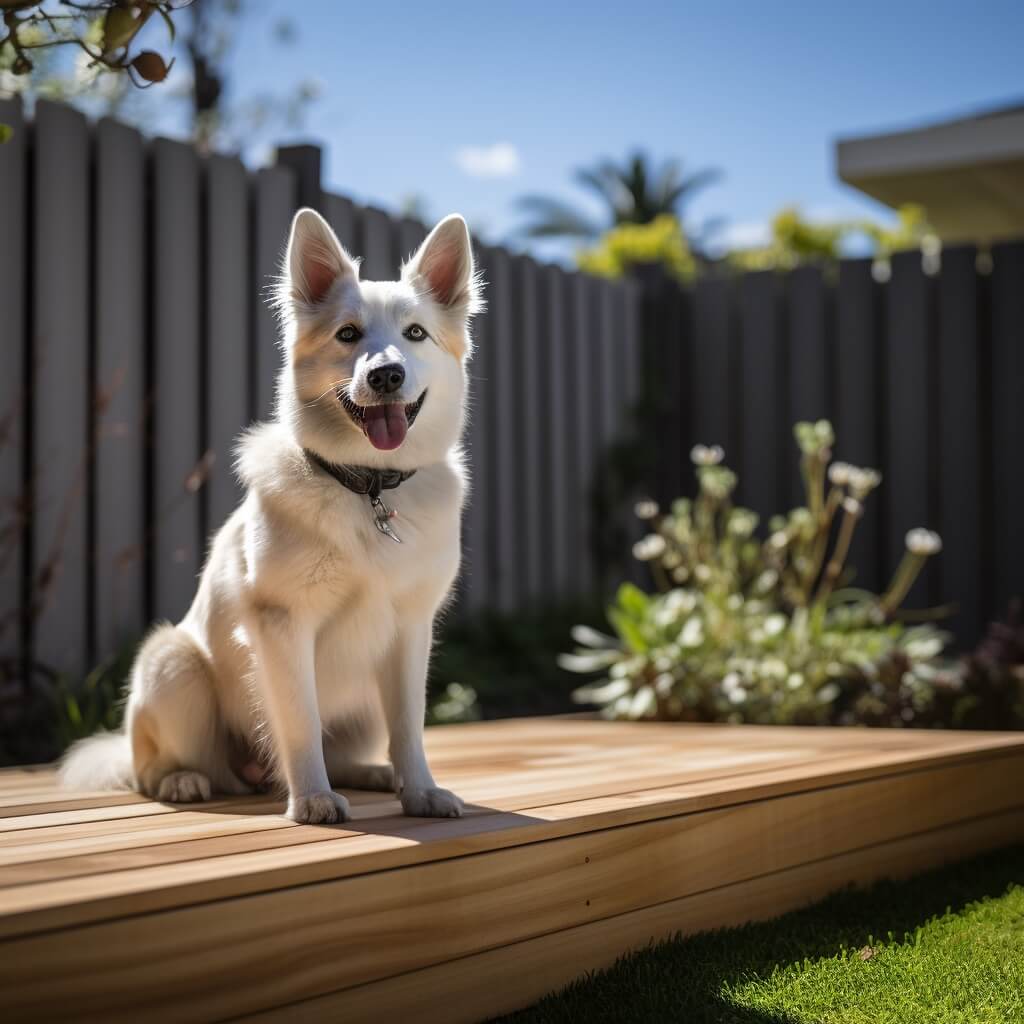
6 | Cheap DIY Rustic Log Fence
There’s an undeniable allure to the rugged beauty of raw logs. When incorporated into garden fencing, they evoke images of serene countryside retreats and woodland cabins. A DIY rustic log fence is the perfect way to bring this bucolic charm right to your backyard, and the best part? It’s surprisingly budget-friendly. Sourcing logs, especially if you’re near wooded areas, can be cost-effective, and their natural robustness ensures you’re investing in a fence that’s built to last. The uneven textures and varying shades of logs lend an organic, unrefined touch, making each section of the fence a unique work of art.
While the rustic aesthetic is a significant draw, the simplicity of construction is another advantage. Logs can be stacked horizontally, bound together with durable twine or metal wire, or they can be set vertically into the ground like traditional posts. To enhance the fence’s longevity, consider treating the logs with a natural sealant to protect against the elements. Intersperse the logs with gaps to allow climbing plants to weave through, or hang lanterns and birdhouses for added charm. A rustic log fence embodies nature’s enduring allure and champions eco-friendly living.
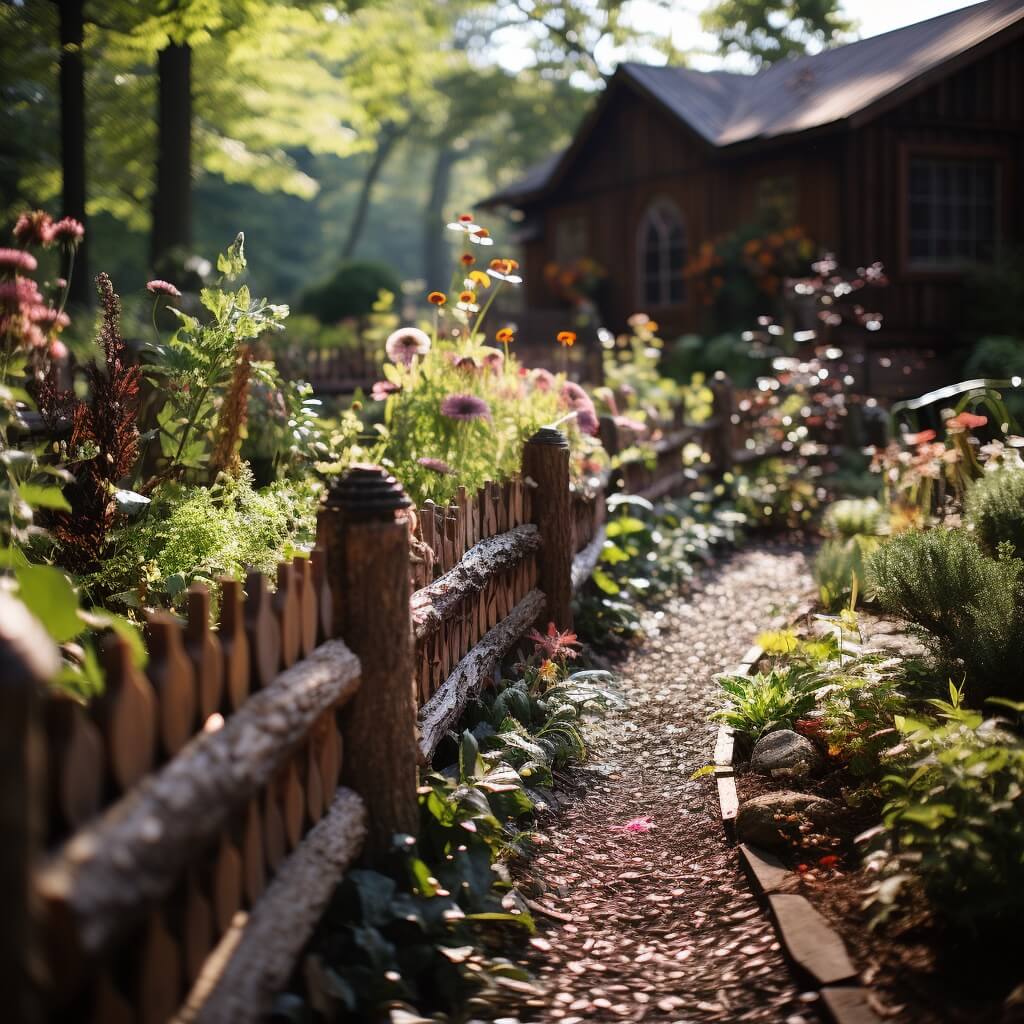
7 | DIY Garden Deer Fence
Gardening enthusiasts know the mixed feelings of spotting a deer in the garden. While their grace and beauty are a sight to behold, the aftermath of their feasting on your carefully nurtured plants can be disheartening. Enter the DIY garden deer fence: a solution that allows you to coexist peacefully with these majestic creatures while safeguarding your green treasures. The key is to design a fence that’s effective without feeling fortress-like. Deer are impressive jumpers, so height is crucial. A fence that stands at least 7 to 8 feet tall is typically recommended to deter even the most determined deer.
But functionality doesn’t mean compromising on aesthetics. Opt for materials that blend seamlessly with your garden’s landscape. Mesh netting or wire can be almost invisible from a distance, ensuring the beauty of your garden remains unobstructed. If you prefer a more natural look, tall wooden fence posts interspersed with shrubs can create a barrier that’s both effective and visually pleasing. For added deterrence, consider planting deer-resistant plants along the fence line or using aromatic herbs that deer tend to avoid. With a deer fence, you’re creating a harmonious balance, respecting wildlife while ensuring your garden thrives undisturbed.
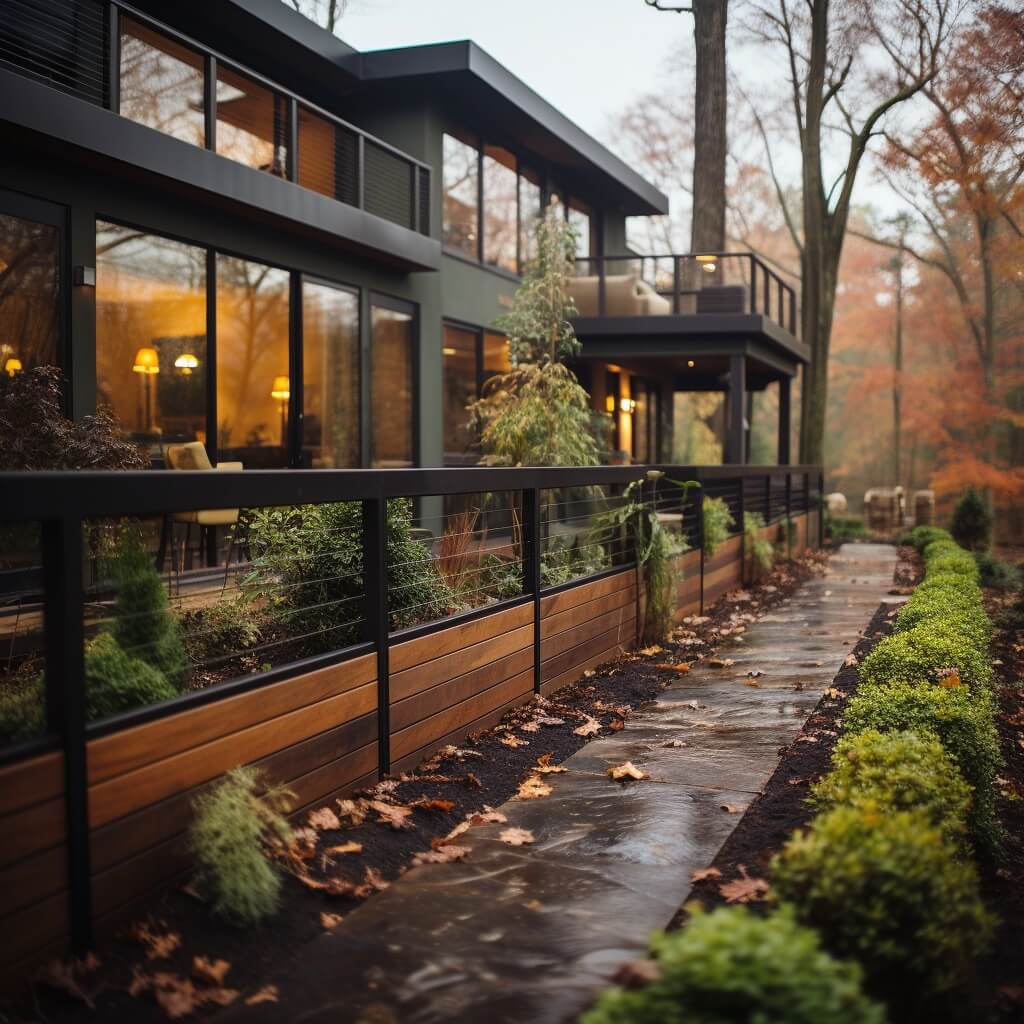
8 | Modern DIY Metal Garden Fence
In the realm of garden fencing, metal brings a contemporary flair that’s both sleek and enduring. A DIY metal garden fence is the epitome of modern elegance, offering clean lines and a minimalist aesthetic that complements a range of garden styles. Whether you’re drawn to the industrial charm of corrugated metal or the refined allure of wrought iron, metal fencing provides a striking contrast to the soft, organic elements of your garden. Its reflective properties can play with light, casting intriguing shadows during the day and adding a touch of drama when illuminated at night.
Beyond its visual appeal, metal offers robust durability. Resistant to pests, rot, and the ravages of time, a metal fence is an investment in longevity. For those concerned about potential rust, options like powder-coated aluminum or galvanized steel come to the rescue, ensuring your fence remains pristine through seasons of rain and shine. Incorporate design elements like geometric patterns or laser-cut motifs to elevate the fence’s visual interest. Pair with modern landscaping elements like sculptural plants or stone pathways, and you’ve got a garden space that’s not just secure but also a testament to contemporary design brilliance.
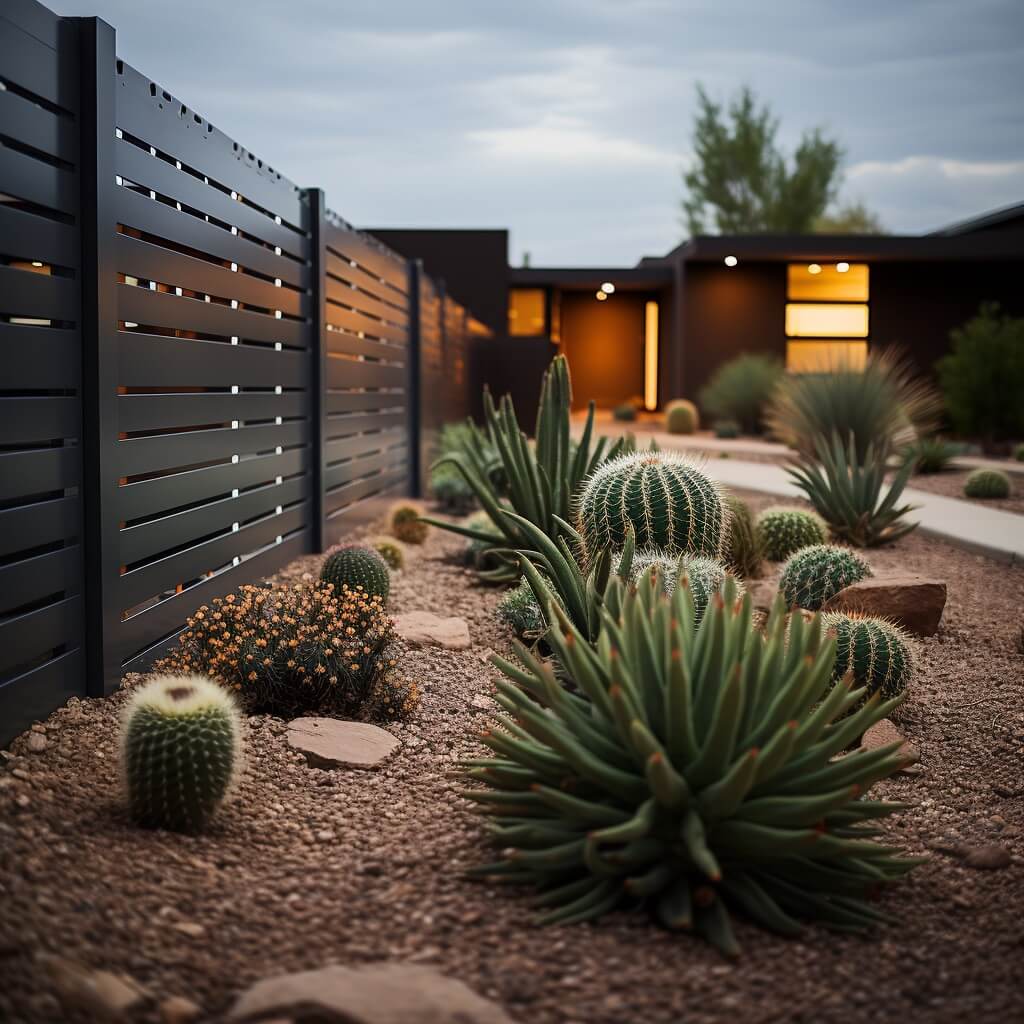
9 | DIY No Dig Pallet Fence
The thought of digging deep holes and dealing with concrete can be a deterrent for many DIY enthusiasts. That’s where the genius of a no-dig pallet fence comes into play. Harnessing the versatility of pallets, this fencing solution offers a hassle-free installation process that’s as kind to your back as it is to your wallet. The foundation of a no-dig pallet fence relies on sturdy base supports, often made of metal or heavy-duty plastic, which anchor the fence without the need for excavation. Once these are in place, pallets can be effortlessly attached, creating a robust barrier in a fraction of the time traditional methods would demand.
Beyond the ease of installation, a no-dig pallet fence offers ample room for creativity. Pallets can be painted, stained, or even adorned with decorative elements to match your garden’s aesthetic. Introduce climbing plants to weave through the slats, or add solar lights atop each post for a magical nighttime glow. The gaps between pallet boards can be adjusted to your preference, allowing for varying degrees of privacy and airflow. Embracing a DIY no-dig pallet fence means you’re choosing a path of efficiency without compromising on style or stability. It’s proof that sometimes, the best solutions are those that think outside the box—or in this case, outside the dig.
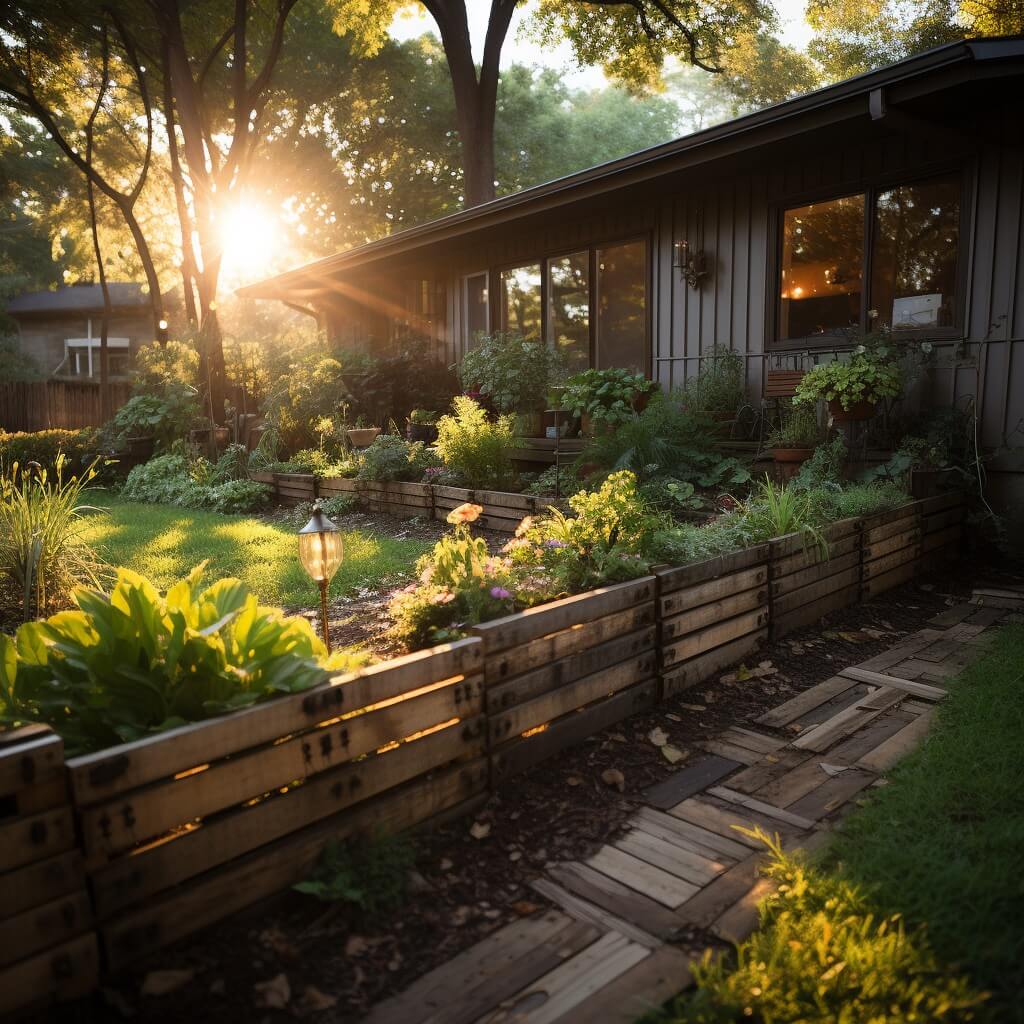
10 | DIY Plastic Garden Fence
In the ever-evolving world of DIY, plastic emerges as an unconventional yet remarkably effective fencing material. Lightweight, versatile, and resistant to the elements, a DIY plastic garden fence offers a modern twist on traditional fencing solutions. Gone are the days when plastic was synonymous with flimsy or unattractive. Today’s high-quality plastic materials come in a plethora of designs, from mimicking the look of classic wood to showcasing vibrant, contemporary colors. The beauty of plastic lies in its adaptability; it can be molded into intricate patterns, offering a unique blend of design flexibility and durability.
But the advantages of a plastic garden fence extend beyond aesthetics. Its non-porous nature means it’s impervious to pests, rot, and mold, ensuring a low-maintenance fencing solution that stands the test of time. Installation of inexpensive fence is a breeze, with panels easily snapping together, eliminating the need for nails or screws. For those environmentally conscious, many plastic fences are made from recycled materials, making it a sustainable choice for the eco-friendly gardener. Whether you’re aiming for a minimalist look or a statement piece, a plastic fence proves that innovative materials can lead to stunning results, redefining the boundaries of garden design.
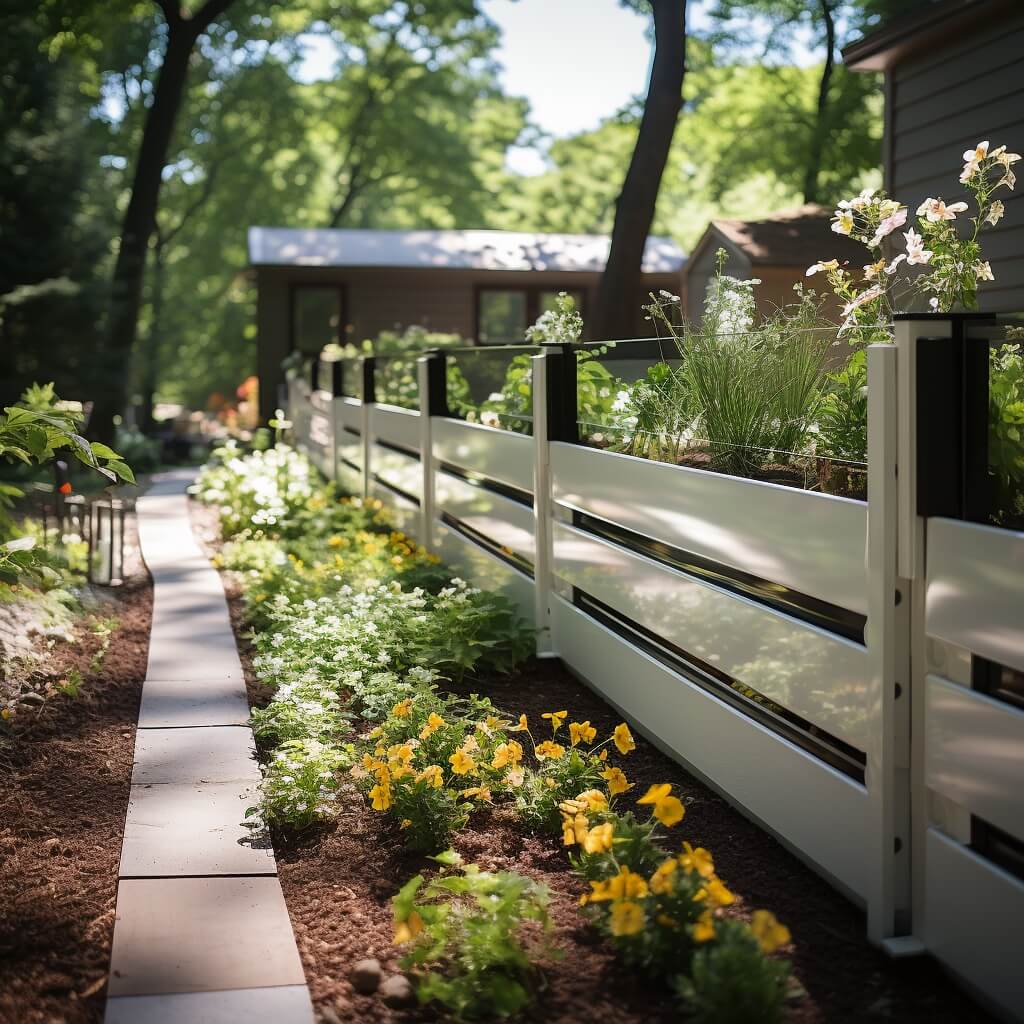
11 | Ipe DIY Garden Border Fence
Ipe, often referred to as Brazilian Walnut, is a hidden gem in the world of garden fencing. This exotic hardwood boasts a rich, deep hue that exudes luxury and sophistication. When crafted into a garden border fence, Ipe transforms the ordinary into the extraordinary, creating a stunning visual boundary that’s as much a piece of art as it is a functional barrier. Its tight grain and smooth finish give it a refined appearance, making it a standout choice for those looking to elevate their garden’s aesthetic. Whether you’re framing a flower bed or delineating different garden zones, an Ipe border fence adds a touch of elegance that’s hard to match.
But Ipe isn’t just about good looks. This hardwood is renowned for its incredible durability and resistance to decay, insects, and even fire. Its dense nature means it’s less prone to warping or cracking, ensuring your border fence remains pristine for years to come. While Ipe’s natural color is a beautiful reddish-brown, it can also be stained or oiled to achieve different shades, allowing for customization to fit your garden’s theme. Opting for an Ipe DIY garden border fence is a testament to discerning taste and a commitment to quality, ensuring your garden is framed by nothing but the best.
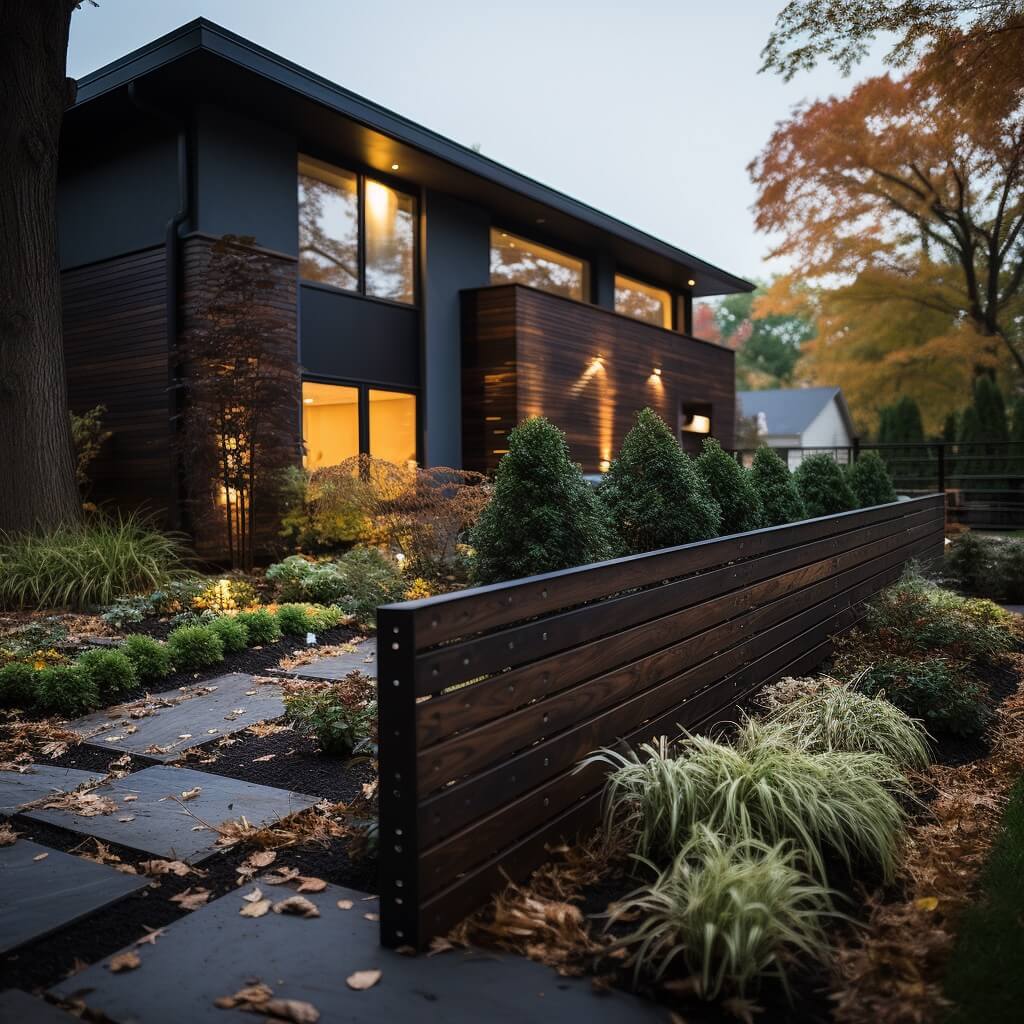
12 | Cedar DIY Front Garden Fence
Cedar, with its aromatic scent and warm, reddish hue, has long been a favorite among garden enthusiasts and DIY aficionados alike. When it graces the front of a property as a garden fence, cedar makes a statement of timeless elegance and natural beauty. This wood has a unique ability to blend seamlessly with its surroundings, whether you’re aiming for a quaint cottage vibe or a more modern, streamlined look. Its fine grain and soft texture allow for intricate designs, from ornate latticework to bold, horizontal slats, ensuring your front garden becomes an inviting focal point for all who pass by.
Beyond its undeniable aesthetic appeal, cedar offers a host of practical benefits. Naturally rich in oils, cedar is resistant to rot, decay, and insect infestations, making it a durable choice for outdoor projects. Over time, cedar gracefully ages to a silvery-gray patina, adding character and depth to your fence. For those who prefer its original color, a light sealant can preserve its vibrant tones. Crafting a DIY front garden fence from cedar is not just an investment in your property’s curb appeal; it’s a nod to quality, longevity, and the timeless charm of nature.
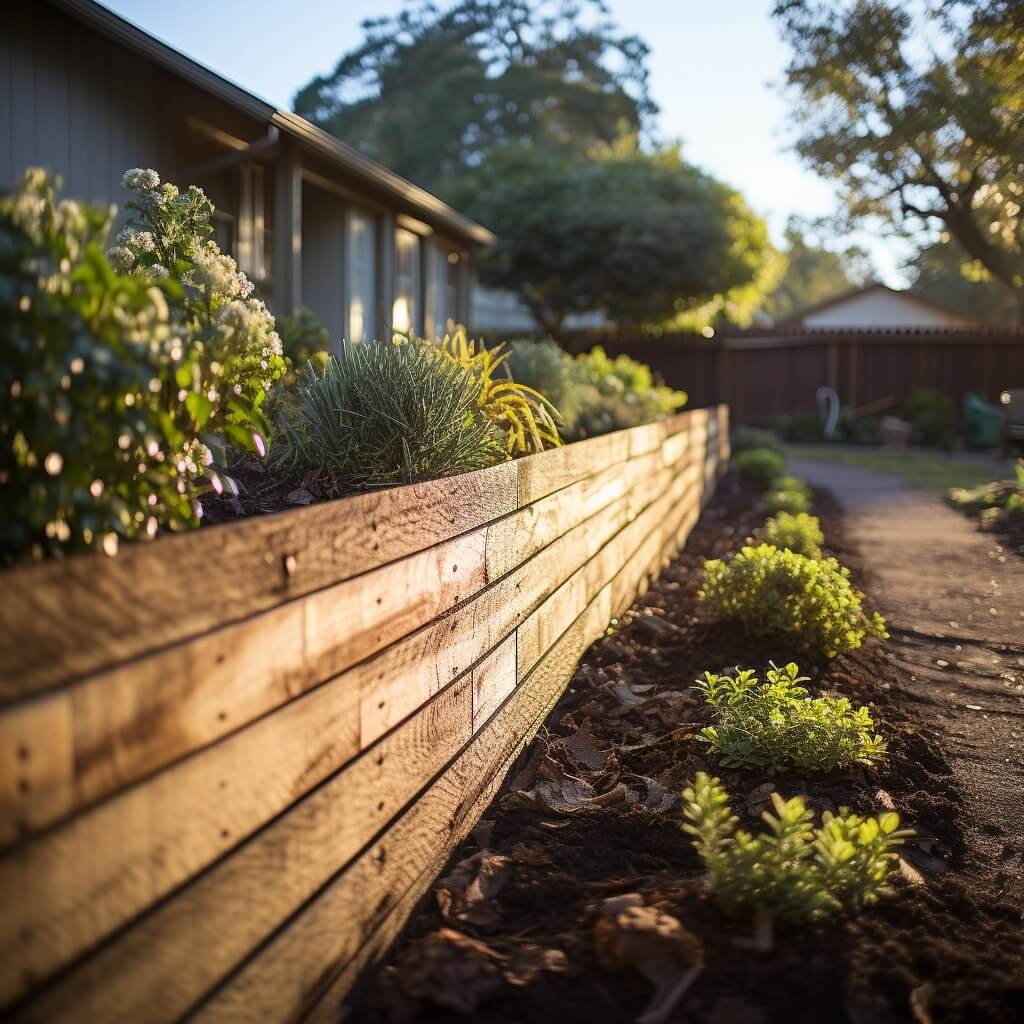
13 | DIY PT Pine Privacy Fence
Pressure-treated (PT) pine has revolutionized the realm of outdoor projects, offering an affordable yet robust solution for those seeking both privacy and protection. A DIY PT pine privacy fence is the perfect blend of functionality and aesthetics. The tall, closely-spaced boards ensure that prying eyes are kept at bay, granting you a secluded oasis right in your backyard. The natural grain patterns of pine, enhanced by the pressure-treating process, provide a rustic charm that can be tailored to suit both contemporary and traditional garden styles. Whether you opt for a smooth finish or a more textured, rough-hewn look, PT pine stands ready to be molded to your vision.
The strength of a PT pine fence lies not just in its appearance but in its resilience. The pressure-treating process infuses the wood with preservatives, making it resistant to decay, fungi, and termites. This ensures that your fence remains sturdy and intact, braving the elements year after year. For added longevity, consider staining or painting your fence to protect against UV rays and moisture. A DIY privacy fence transforms your garden into a tranquil haven, offering both seclusion and serenity.
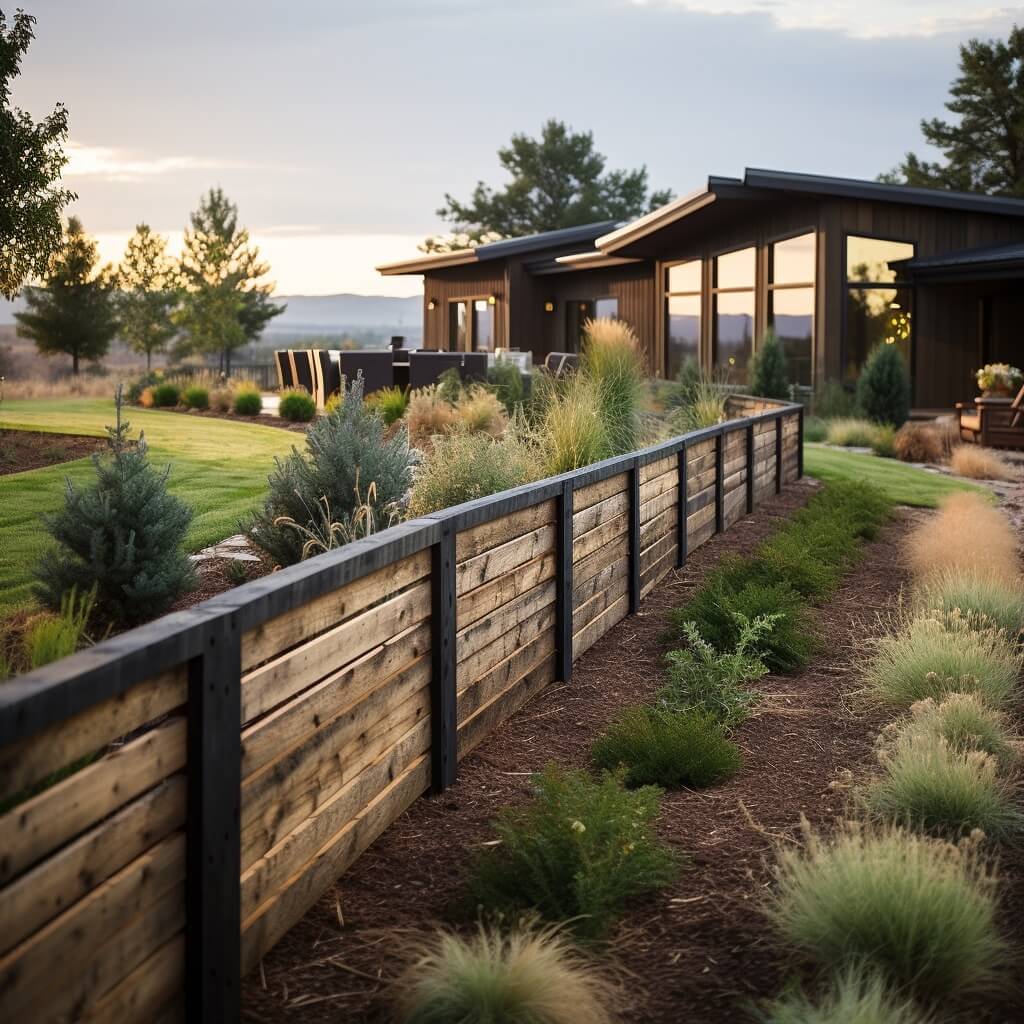
14 | DIY Bamboo Fence with Gate
Bamboo, with its slender elegance and tropical allure, offers a refreshing departure from traditional fencing materials. Crafting a DIY bamboo fence with an integrated gate is like bringing a slice of an exotic paradise right to your doorstep. The rhythmic pattern of bamboo canes, bound together, creates a visually captivating barrier that dances with light and shadow. The inclusion of a gate in bamboo fencing, whether designed with a simple arch or adorned with intricate carvings, adds a touch of intrigue, beckoning visitors to discover the garden oasis that lies beyond.
But the appeal of a bamboo fence isn’t solely aesthetic. Bamboo is renowned for its rapid growth and sustainability, making it an eco-friendly choice for the environmentally conscious gardener. Its natural resilience to pests and flexibility in the face of strong winds ensures durability. To enhance the longevity of your bamboo fence, consider treating it with a UV-resistant sealant to retain its rich, golden hue. Pair your bamboo fence with lush greenery, water features, or stone pathways to create a Zen-inspired retreat. A bamboo fence does more than define borders; it creates a gateway to a serene, nature-filled oasis.
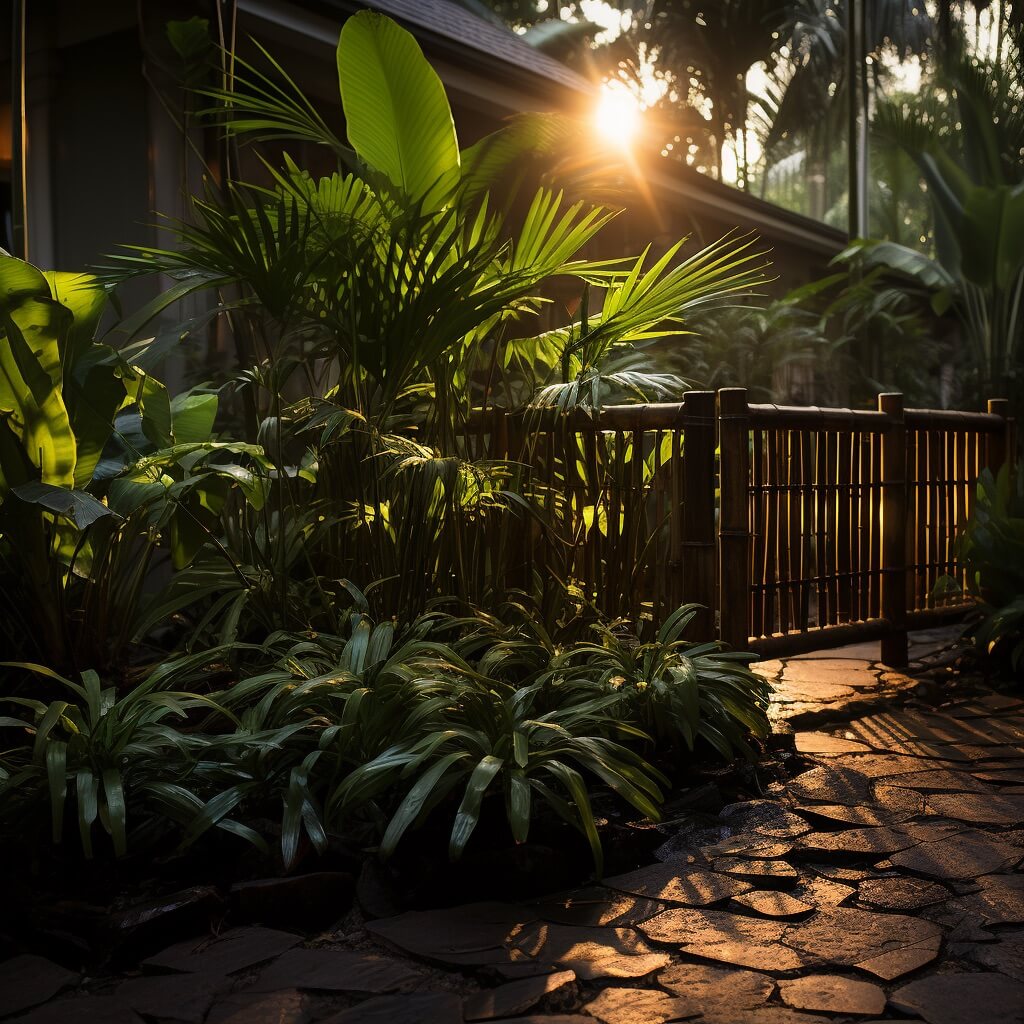
15 | DIY Nautical Rope Fence
Channeling the spirit of coastal retreats and breezy beachfronts, a DIY nautical rope fence is a delightful way to infuse your garden with a maritime charm. This fencing style, characterized by thick ropes strung between wooden or metal posts, evokes memories of sandy shores, crashing waves, and the distant call of seagulls. It’s a fence that doesn’t just mark boundaries but tells a story, transporting you to sunlit docks and serene harbors. The gentle sway of the ropes in the wind adds a dynamic element, making your garden feel alive with the rhythm of the sea.
Beyond its evocative aesthetics, a nautical rope fence is surprisingly sturdy and versatile. The ropes, often made of durable materials like hemp or nylon, resist weathering and provide a flexible barrier that’s both functional and decorative. The posts, whether weathered driftwood or sleek metal, can be customized to match your garden’s theme. Consider adding marine-inspired embellishments, like anchors or ship wheels, to enhance the nautical vibe. Intersperse with lanterns or seashell ornaments for that perfect seaside touch.
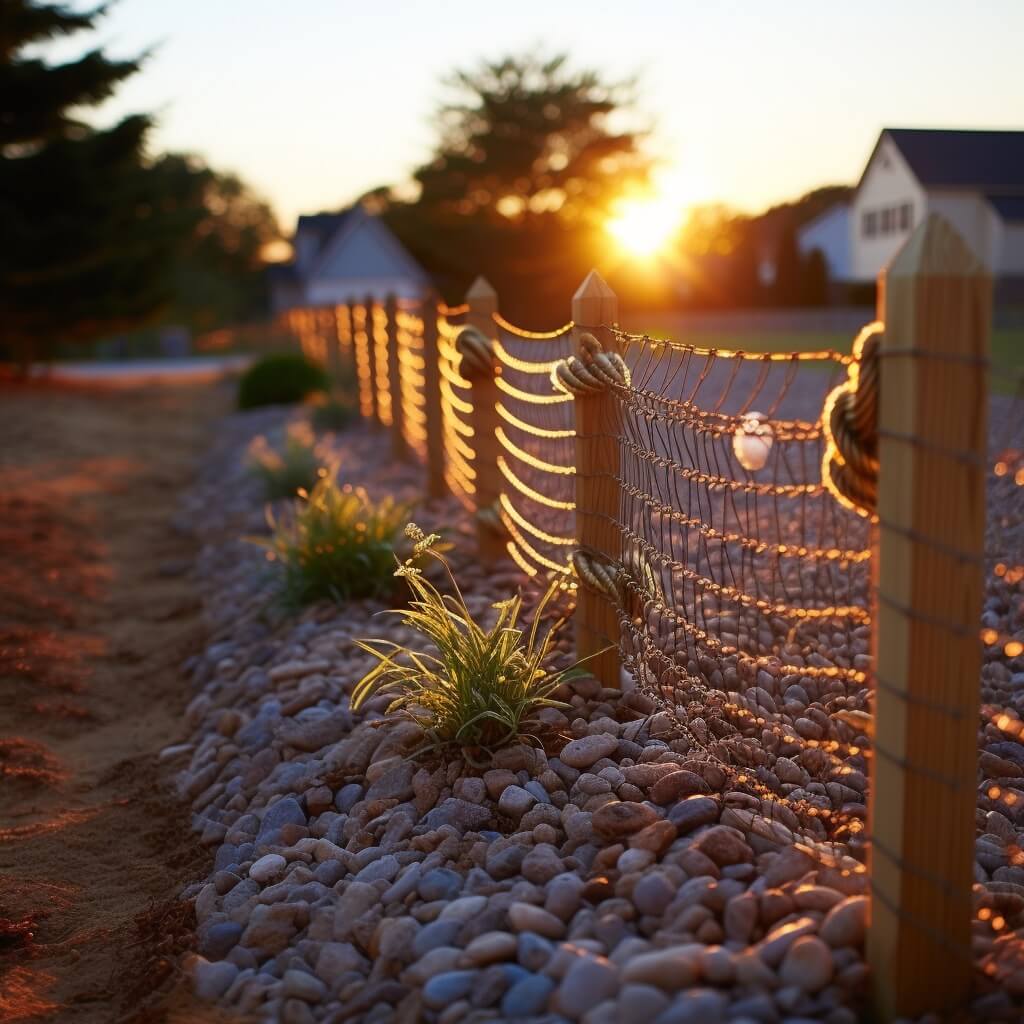
16 | DIY Vegetable Garden Fence
Every gardener knows the thrill of watching their vegetable patch flourish, but with it comes the challenge of keeping pesky critters at bay. A DIY vegetable garden fence serves as a guardian, ensuring your hard-earned harvest remains untouched and ready for your table. This simple garden fence isn’t just about protection; it’s a canvas where functionality meets aesthetics. Picture a fence that complements the vibrant hues of tomatoes, bell peppers, and zucchinis, creating a picturesque tableau that’s as delightful to the eyes as it is beneficial to your garden’s health.
Crafting the perfect fence for your vegetable garden requires a blend of sturdiness and accessibility. Materials like chicken wire or mesh are effective deterrents against smaller animals, while taller wooden or metal barriers can keep out larger intruders. Incorporate gates for easy access, perhaps with arches that can support climbing beans or peas. To elevate the aesthetic appeal, consider painting the fence in earthy tones or adorning it with garden-themed murals. Intersperse with trellises for cucumbers or sunflowers, adding both height and visual interest. A bamboo fence does more than define borders; it creates a gateway to a serene, nature-filled oasis.
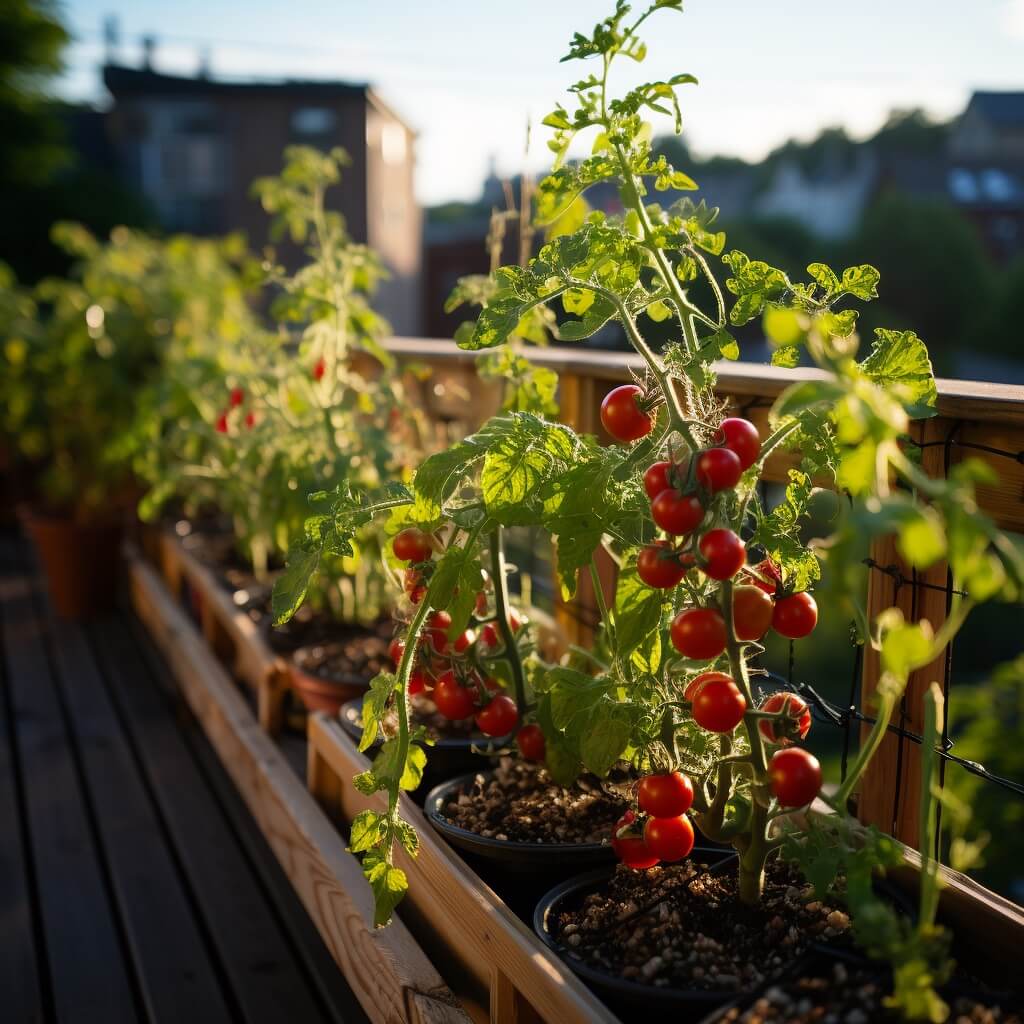
17 | DIY Decorative Garden Fence
A garden is a reflection of one’s personality and creativity, and what better way to express that than with a DIY decorative garden fence? This isn’t just any fence; it’s a statement piece, a work of art that adds flair and character to your outdoor space. Think of it as a frame that accentuates the beauty of your garden, turning it into a living masterpiece. From intricate ironwork designs to whimsical patterns made from repurposed materials, the possibilities are as boundless as your imagination, allowing you to craft a beautiful fence that’s uniquely yours.
While the primary purpose of a decorative fence is to beautify, it doesn’t mean compromising on functionality. Choose materials that are both durable and malleable, allowing for intricate designs without sacrificing strength. Incorporate elements like mirrors to create an illusion of space or add solar-powered fairy lights for a magical glow at dusk. Play with colors, perhaps by painting murals or using multi-colored tiles for a mosaic effect. Intertwine climbing plants like roses or ivy, letting nature become a part of your design. A decorative garden fence showcases your creativity, sparking conversations and pride with every garden visit.
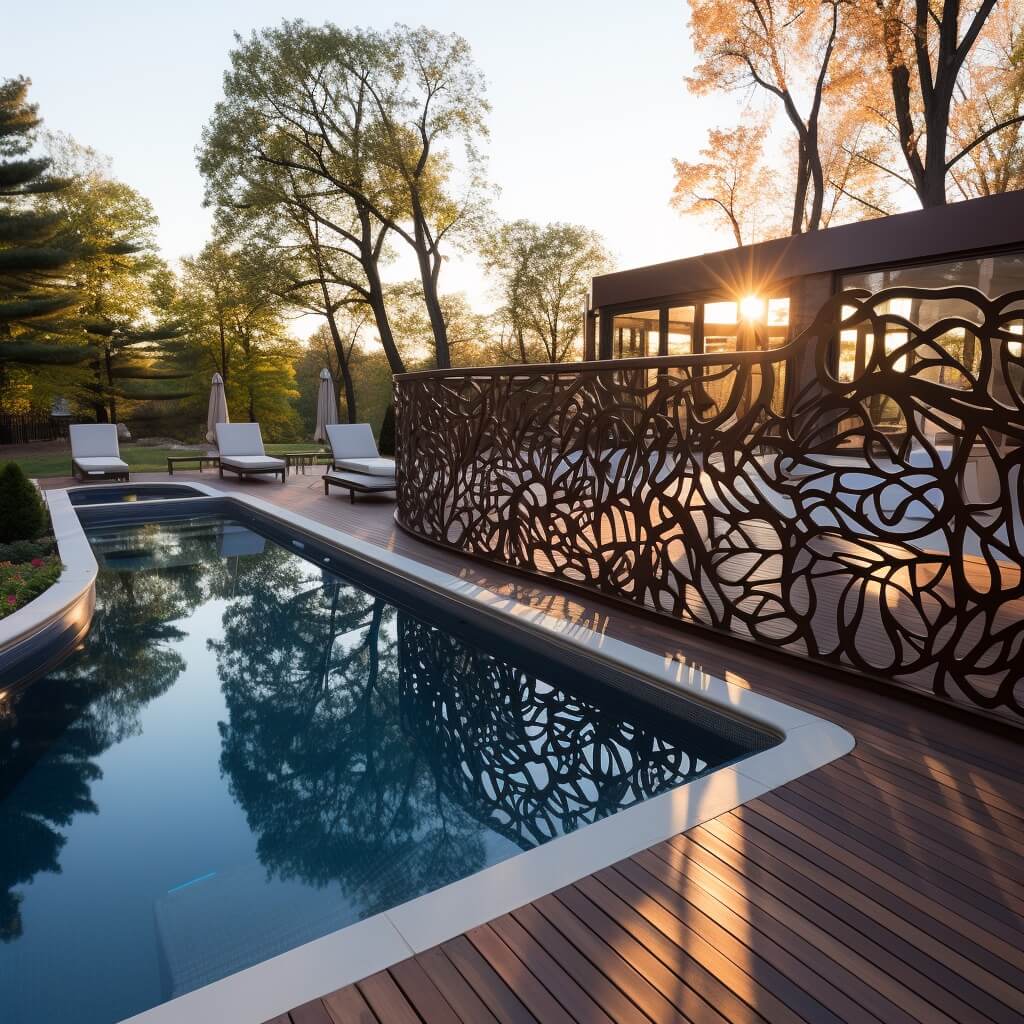
18 | Douglas Fir DIY Picket Fence
Douglas Fir, with its straight grain and light rosy color, brings a touch of classic Americana to any garden setting. When fashioned into a picket fence, this wood exudes a charm reminiscent of idyllic countryside homes and white-picket dreams. A Douglas Fir picket fence is more than just a boundary; it’s a nod to tradition, evoking memories of simpler times while providing a contemporary touch to modern landscapes. The uniformity of its grain ensures clean, crisp lines, making each picket stand tall and proud, guarding your garden with grace and elegance.
But the allure of Douglas Fir split rail fence isn’t limited to its visual appeal. This softwood, native to the Pacific Northwest, is known for its strength and durability. When treated properly, it can resist decay and pests, ensuring your picket fence remains a lasting fixture in your garden for years to come. The wood takes well to paints and stains, allowing you to customize its look to match your garden’s theme. Whether classic white or bold colors, a Douglas Fir picket fence offers protection while blending tradition and style.
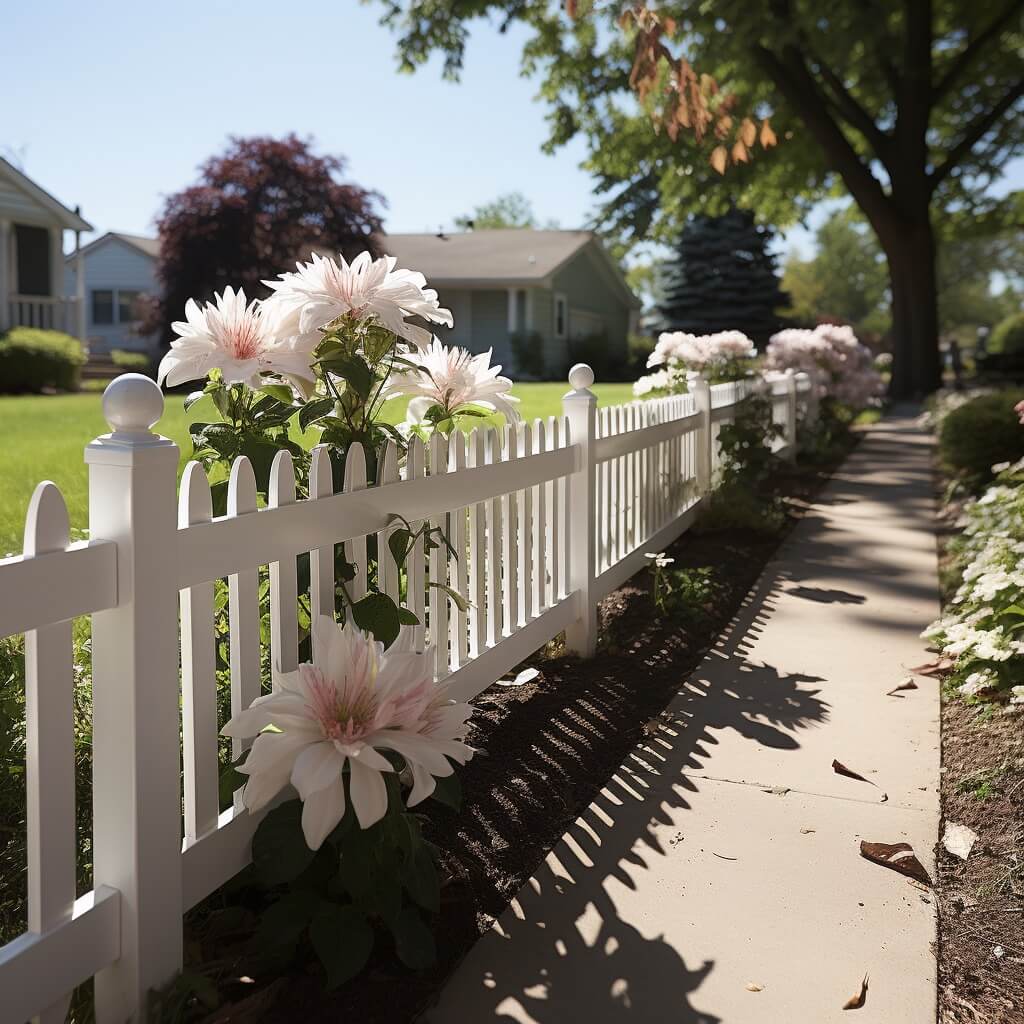
19 | DIY Farmhouse Style Fence
The timeless appeal of the farmhouse style, with its blend of rustic charm and modern simplicity, has a way of transporting us to a serene countryside retreat. Incorporating this aesthetic into a DIY farmhouse fence can transform your garden into a cozy haven reminiscent of pastoral landscapes. Picture wide wooden planks, weathered to perfection, creating a backdrop that complements both wildflower meadows and manicured lawns. The fence’s design, often characterized by horizontal lines and natural finishes, exudes a sense of warmth and homeliness, making every entrance and exit from your garden feel like a journey through a storybook setting.
Crafting a rustic farmhouse fence is as much about authenticity as it is about aesthetics. Opt for woods like cedar or pine, which not only provide durability but also age gracefully, enhancing the fence’s rustic appeal over time. Consider leaving the wood untreated to allow it to develop a natural patina, or use whitewashing techniques to achieve that vintage, sun-bleached look. Accessorize with antique-style hardware, like wrought iron latches or barn door hinges, to add a touch of historical authenticity. A farmhouse-style fence combines tales of the past with modern design, crafting a timeless retreat in your backyard.
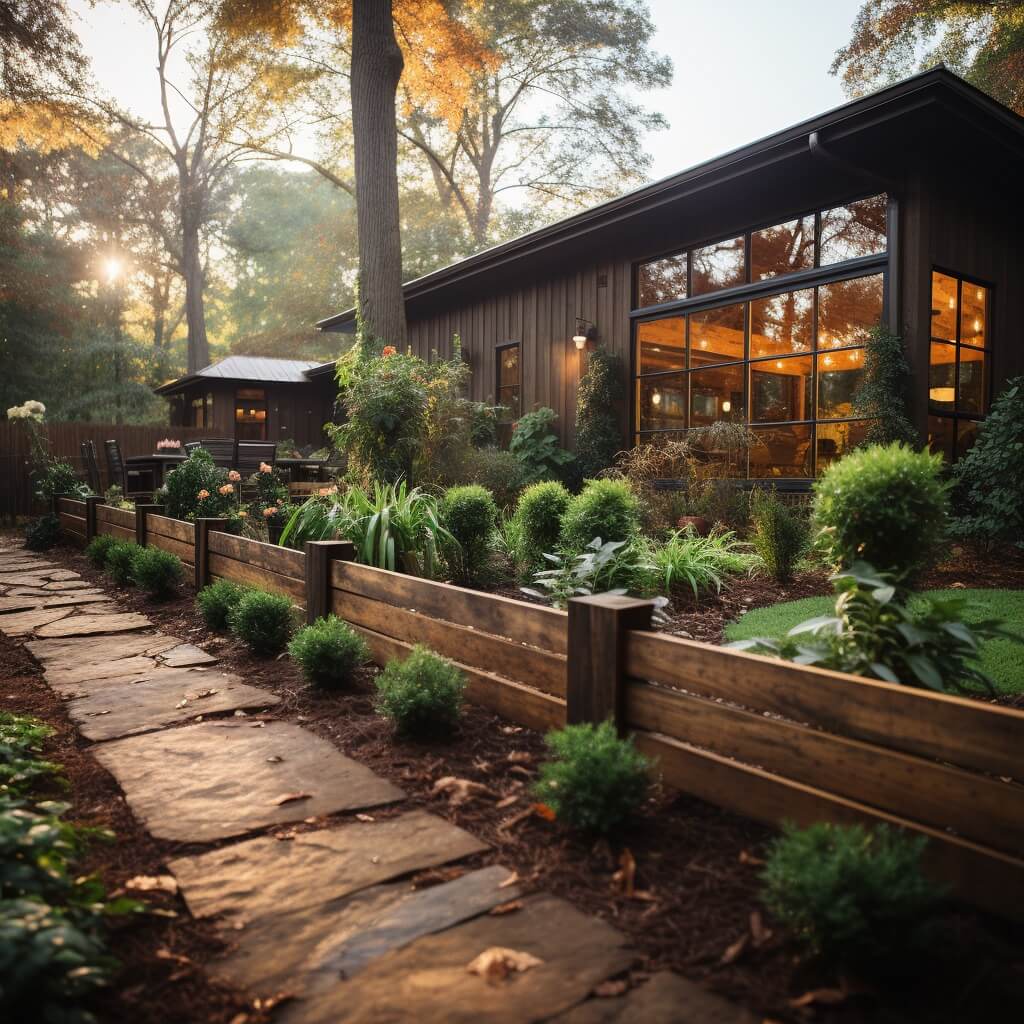
20 | Redwood DIY Vertical Board Fence
Redwood, with its rich hues and remarkable durability, is a woodworker’s dream. When crafted into a vertical board fence, it transforms an ordinary garden boundary into a statement of elegance and timeless beauty. The vertical alignment of the boards offers a modern, streamlined look, adding height and depth to your outdoor space. Moreover, redwood’s inherent resistance to decay and pests makes it an ideal choice for those seeking both aesthetics and longevity in their fencing projects.
Constructing a DIY redwood vertical board fence is an exercise in precision and patience. Begin by setting your posts, ensuring they’re spaced evenly and securely anchored. Next, attach the redwood boards vertically, ensuring each board is flush with its neighbor, creating a seamless, continuous barrier. The natural oils in redwood provide it with a warm, reddish-brown hue, which can be enhanced with a light stain or left to age gracefully, taking on a silvery patina over time. For added flair, consider topping the fence with a decorative lattice or incorporating intermittent horizontal boards for a touch of design variation. A redwood vertical board fence is more than a barrier; it’s a durable work of art, gracefully enduring the elements over time.
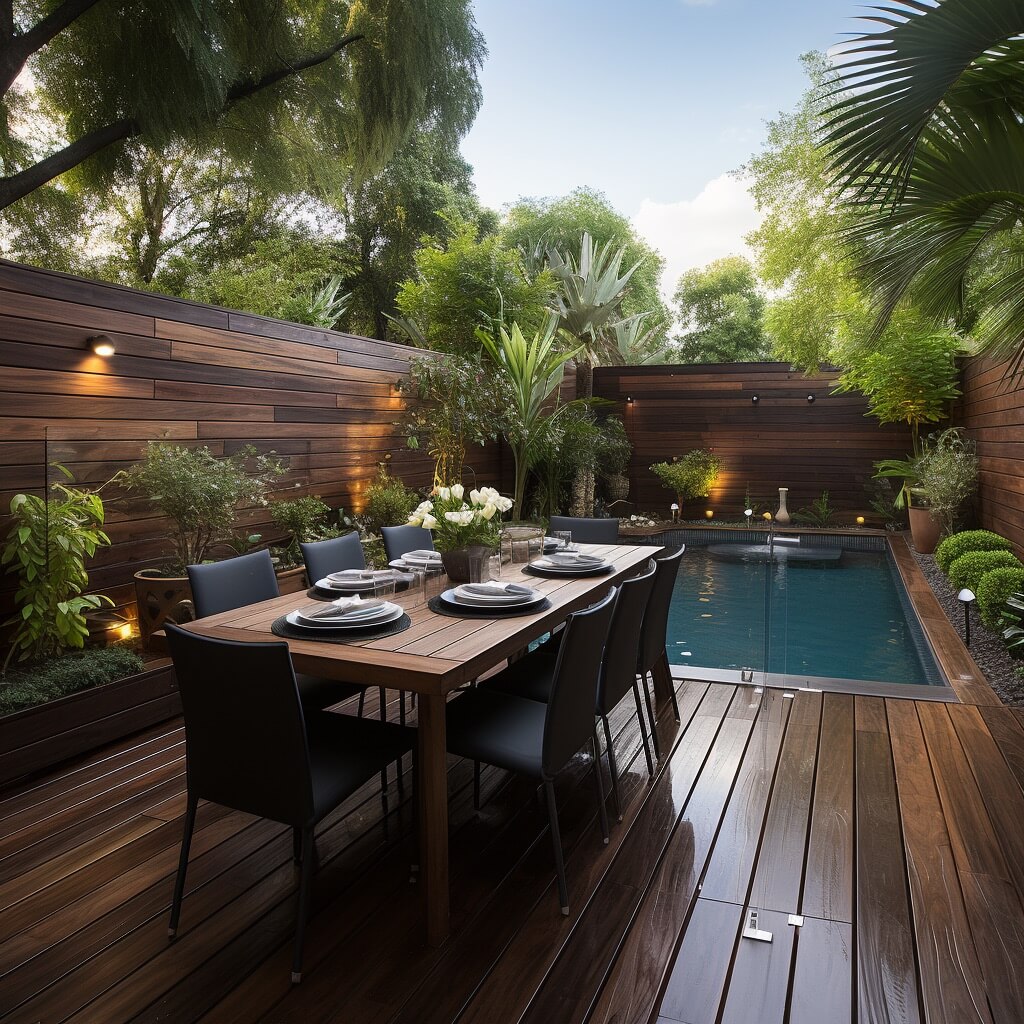
21 | Maple DIY Garden Rabbit Fence
Maple, renowned for its vibrant autumnal hues and sturdy nature, offers a delightful twist when crafted into a garden rabbit fence. This isn’t just about keeping those furry little nibblers at bay; it’s about doing so with style and grace. A Maple rabbit fence stands as a testament to the fusion of functionality and artistry. The wood’s natural grain patterns, interspersed with occasional swirls and whorls, paint a picture of nature’s craftsmanship, providing a barrier that’s as visually captivating as it is effective against those garden-loving critters.
Beyond its aesthetic allure, maple’s durability ensures that your rabbit fence remains resilient against the elements. Its dense grain structure makes it less susceptible to wear and tear, promising years of steadfast protection for your garden. To enhance its longevity, consider treating the wood with a sealant that accentuates its natural color while offering protection against moisture and pests. For those seeking an added touch of whimsy, carve out little motifs or designs on the fence panels, turning them into conversation starters. A DIY rabbit fence not only protects your garden but also surrounds it with natural elegance, promoting both beauty and safety.
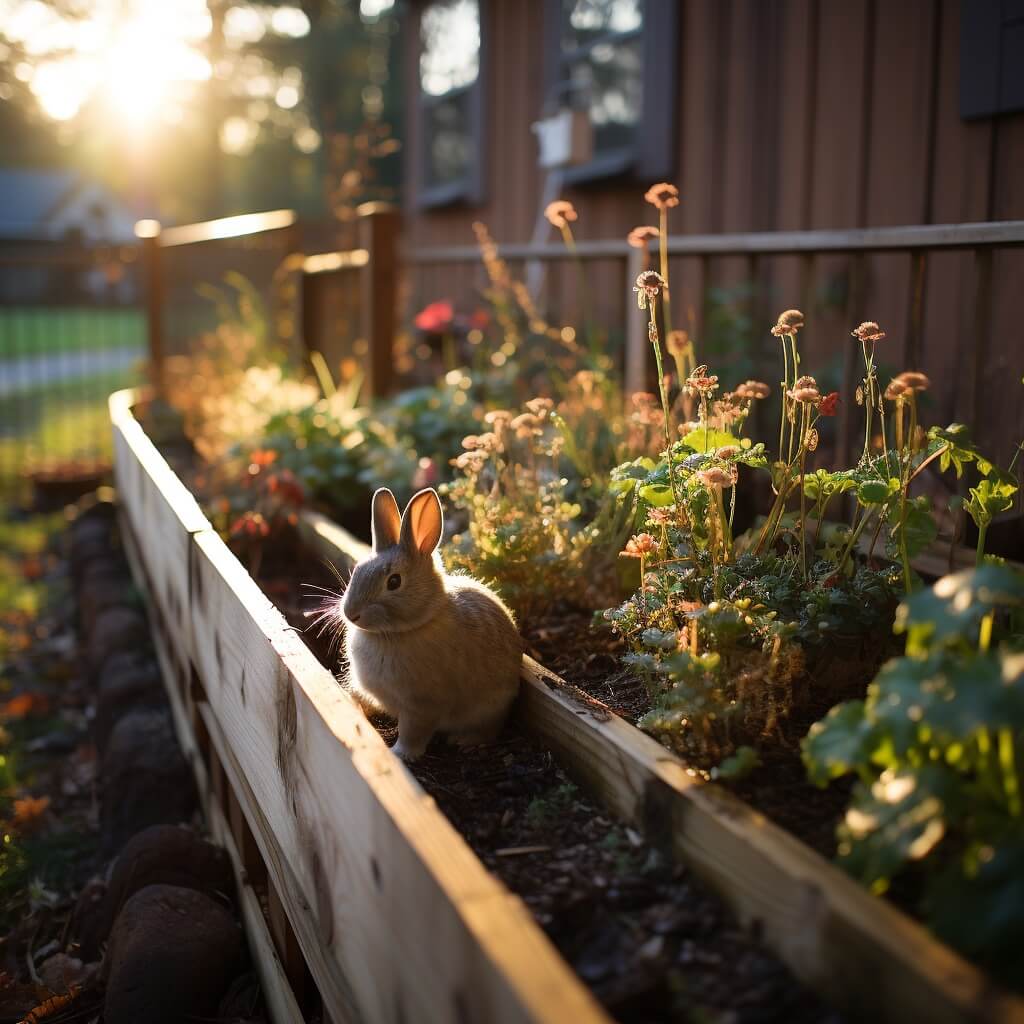
22 | DIY Garden Electric Fence for Foxes
For those who’ve experienced the cunning of foxes, the need for a robust defense becomes paramount. Enter the DIY electric fence, a modern solution tailored to deter these clever intruders. While the idea of an electric fence might sound intimidating, it’s designed to be humane, delivering a brief and mild shock to any fox daring enough to test its boundaries. This jolt, though harmless, is enough to dissuade them from future attempts, ensuring your garden remains a sanctuary for your plants and smaller pets. The fence’s discreet design ensures it blends seamlessly with your garden’s aesthetics, providing protection without overshadowing nature’s beauty.
Setting up an electric fence requires meticulous planning and safety precautions. Opt for a solar-powered charger to ensure consistent energy supply while being eco-friendly. The wires should be spaced strategically, considering the typical height and agility of foxes. It’s essential to install warning signs, informing anyone nearby about the fence’s electric nature. Regularly inspect the fence for any wear or damage, ensuring its optimal functionality. By investing in a electric fence for foxes, you’re not only fortifying your garden’s protection but also promoting coexistence, allowing foxes to remain curious visitors rather than unwelcome intruders.
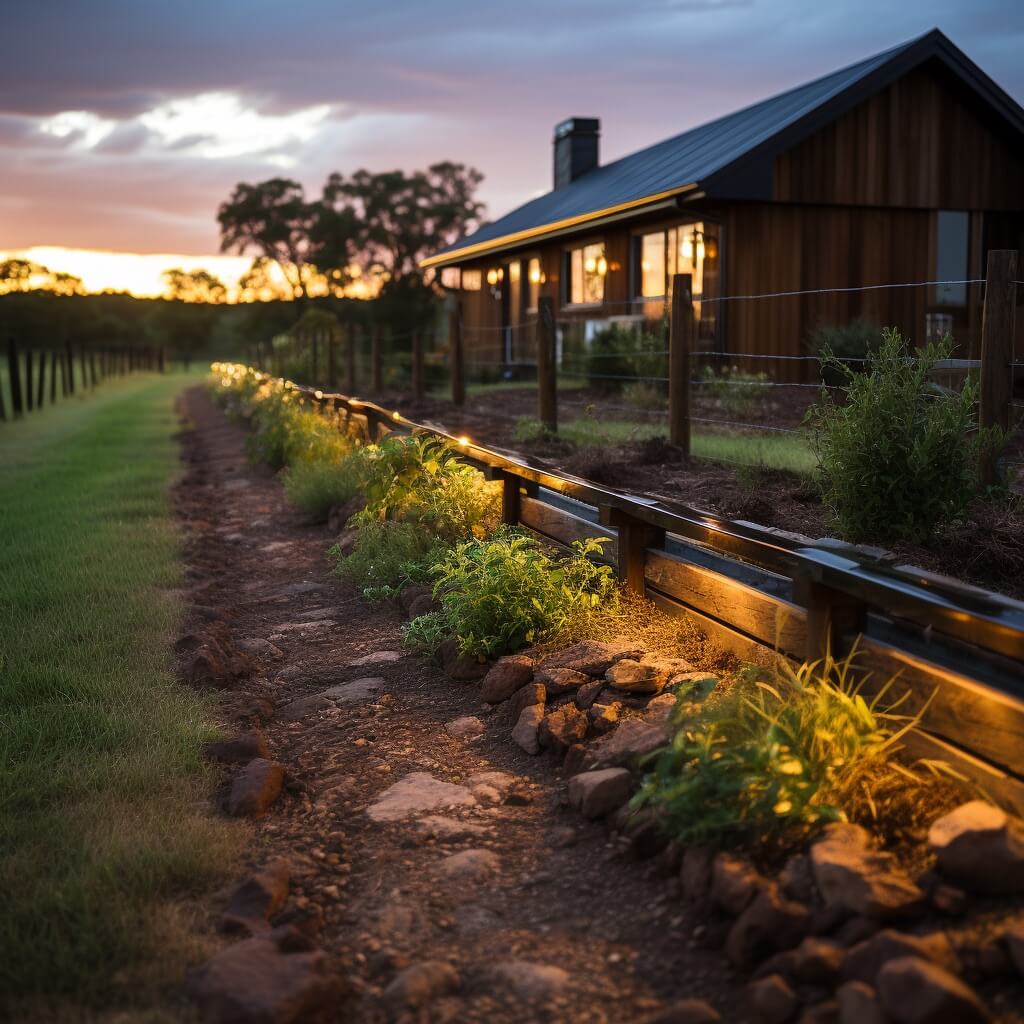
23 | Acacia DIY Garden Fence With Door
Acacia, with its rich, golden hues and remarkable durability, is a wood that speaks of age-old traditions and modern elegance. When crafted into a garden fence, it becomes a statement of style, a blend of nature’s resilience and human artistry. But the real charm unfolds when you incorporate a door into this Acacia masterpiece. This isn’t just any door; it’s an invitation, a welcoming gesture that beckons visitors to step into your garden oasis. The door, with its sturdy frame and intricate design, stands as both a functional entry point and a symbolic threshold, separating the outside world from your tranquil retreat.
Crafting a DIY Acacia fence with a door requires a keen eye for detail. The wood, known for its resistance to rot and pests, promises longevity, but it’s essential to treat it with a protective sealant to enhance its natural beauty and shield it from the elements. The door’s design can range from a simple, rustic style to more elaborate patterns, perhaps with carved motifs or metalwork embellishments. Incorporate a robust latch or lock for security, and consider adding a decorative handle or knocker for that extra touch of elegance. An Acacia DIY fence offers more than just a boundary; it’s a welcoming gateway to a garden where nature and care unite harmoniously.
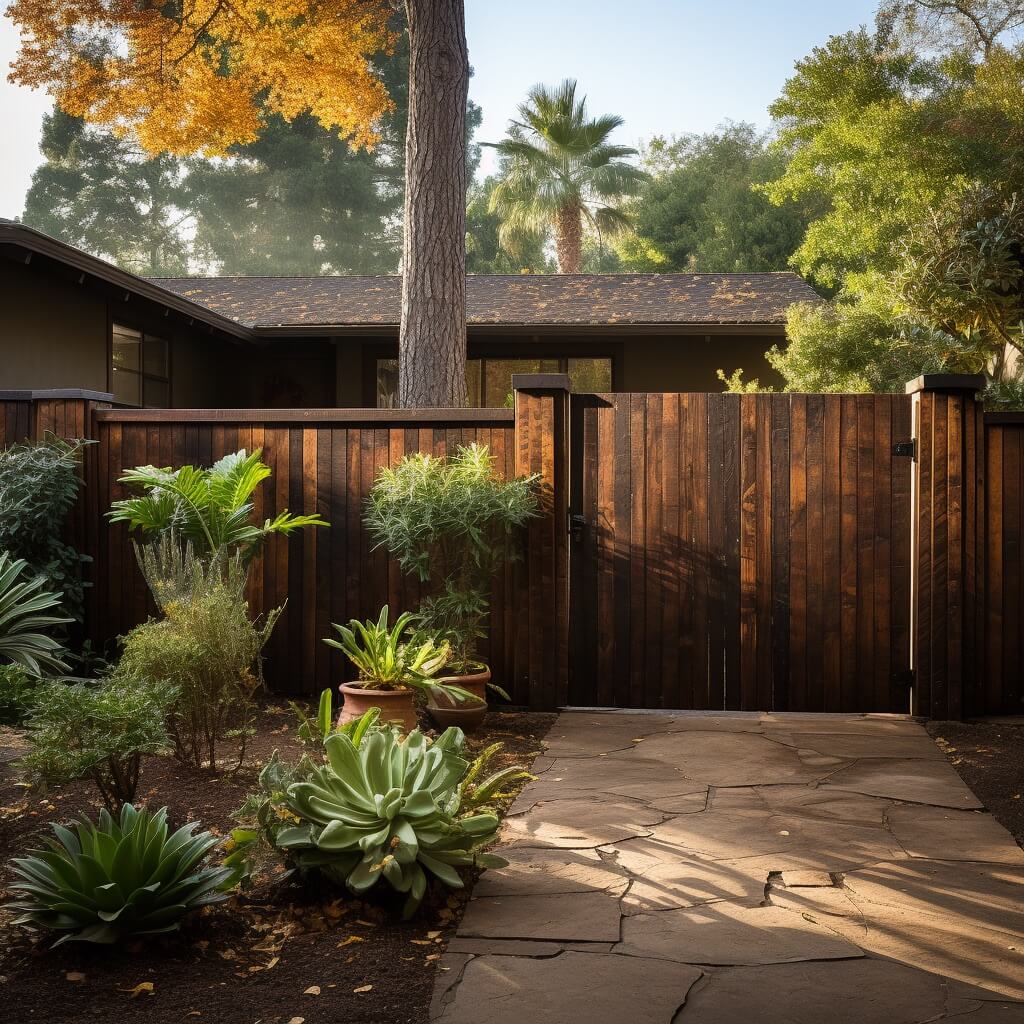
24 | DIY Chicken Wire Garden Fence
There’s an undeniable charm in simplicity, and a DIY chicken wire garden fence embodies this sentiment perfectly. Lightweight yet sturdy, chicken wire offers a transparent shield, ensuring your garden is protected while still allowing you to admire its beauty unobstructed. It’s the ideal solution for those who want to keep out smaller critters or create designated zones within their garden without constructing a solid barrier. The hexagonal mesh pattern, while primarily functional, adds a touch of geometric aesthetics, making the hog wire fence both a protector and a design element.
Constructing a chicken wire fence is a straightforward affair, but it’s the little touches that can elevate its appeal. Start by setting wooden or metal posts at regular intervals, ensuring they’re firmly anchored. Stretch the chicken wire taut between these posts, securing it with staples or ties. To add a touch of creativity, consider weaving colorful ribbons or strings through the mesh, or let climbing plants like clematis or sweet peas use the fence as a trellis. For those keen on upcycling, old wooden frames or doors can be incorporated as gateways, adding a vintage touch. A DIY chicken wire garden fence is a testament to the beauty of minimalism, proving that sometimes, less truly is more.
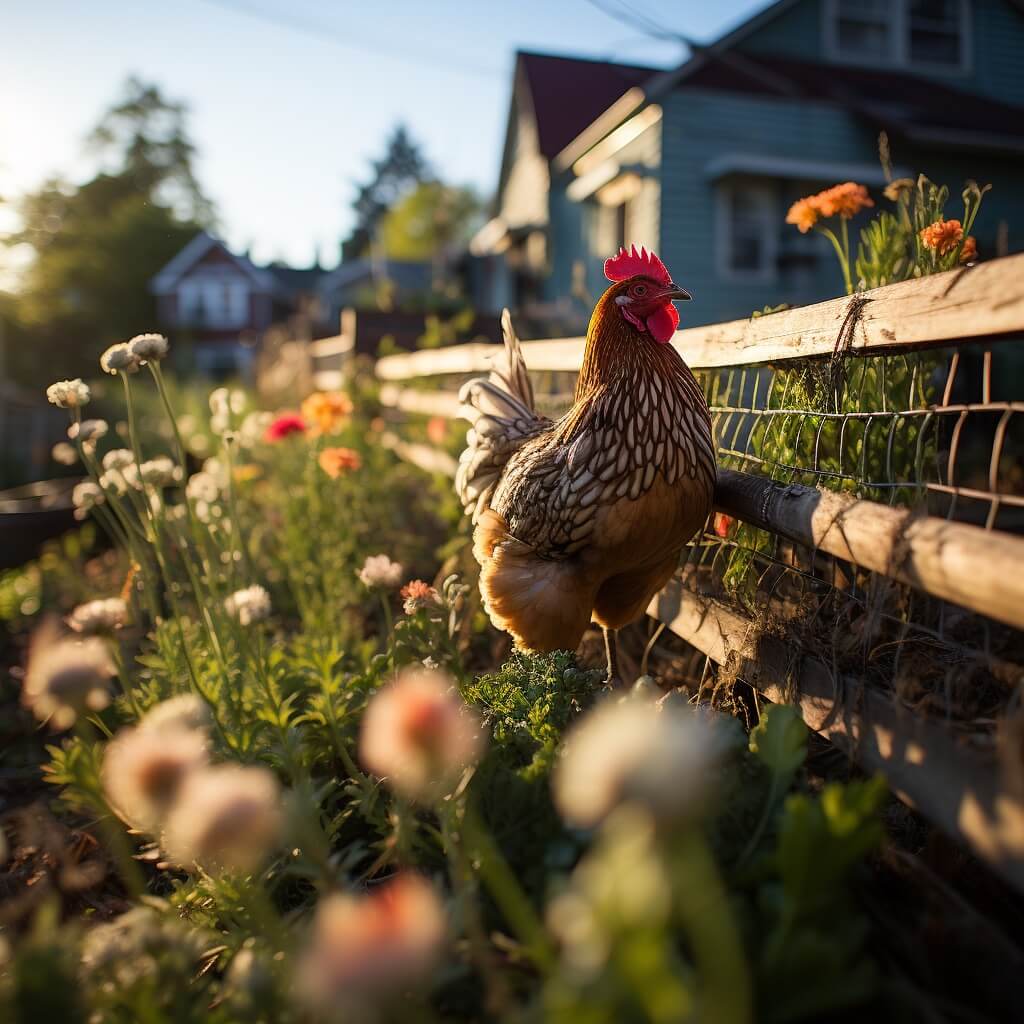
25 | DIY Garden Fence With Vines
Imagine a fence that evolves with the seasons, a living barrier that breathes life into your garden. A DIY garden fence adorned with climbing vines is a dynamic masterpiece, where nature’s tendrils weave their magic, creating a tapestry of greenery and blooms. As the vines climb, twist, and spread, they transform the existing fence top into a vertical garden, offering both privacy and a visual feast. Whether it’s the delicate fragrance of jasmine, the vibrant blossoms of bougainvillea, or the lush drapery of ivy, the choice of vine can set the mood and theme for your outdoor space.
Constructing a fence that supports and complements these climbers requires thoughtful planning. Opt for sturdy materials like wood or metal that can bear the weight of mature vines. Incorporate trellises or mesh panels to offer the vines a grip, guiding their ascent. While the right garden fence provides the canvas, it’s essential to choose vines that suit your region’s climate and soil. Regular pruning will ensure they remain manageable and healthy. As the seasons change, so will your vine-clad fence, with new leaves, flowers, and even fruits emerging, making every glance a new discovery. With a DIY garden fence draped in vines, you’re not just building a boundary; you’re cultivating a living, breathing piece of art.
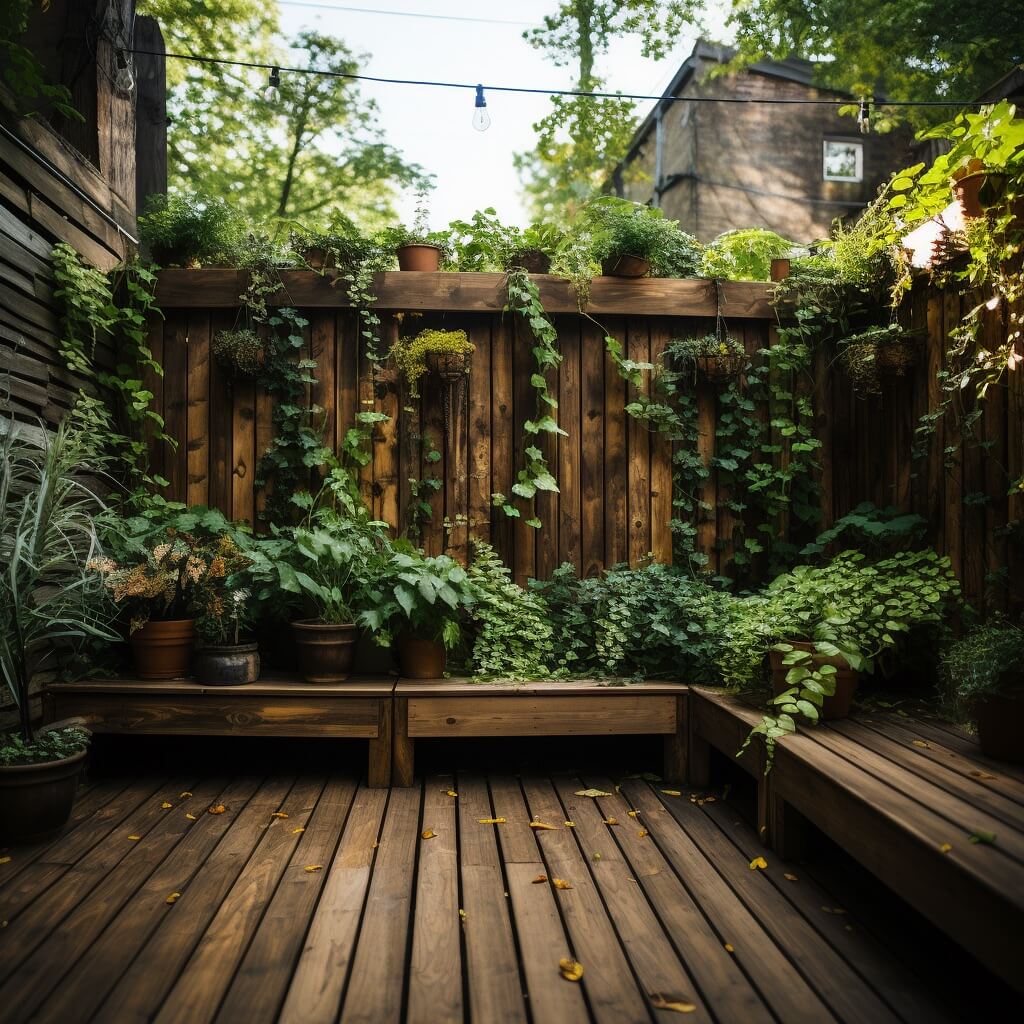
26 | DIY Lattice Garden Fence
A lattice garden fence is where architectural elegance meets garden whimsy. With its crisscross design, it offers a semi-transparent barrier, allowing glimpses of the garden beyond while still providing a sense of enclosure. This fence style is perfect for those who wish to strike a balance between privacy and openness. The interwoven wooden or vinyl strips create diamond-shaped patterns that are not only functional but also aesthetically pleasing. As sunlight filters through the gaps, it casts intricate shadows, adding a touch of drama and depth to your outdoor space.
Building a DIY lattice garden fence is a project that combines creativity with practicality. Start by choosing the material; while wood offers a classic, rustic charm, vinyl might be more suited for those looking for durability and minimal maintenance. Once erected, the lattice becomes a supportive framework for climbing plants, turning the fence into a vertical garden. Imagine sweet-smelling jasmine or vibrant clematis weaving their way through the lattice, enhancing its beauty. For added flair, consider framing the lattice panels with solid borders or incorporating decorative post caps.
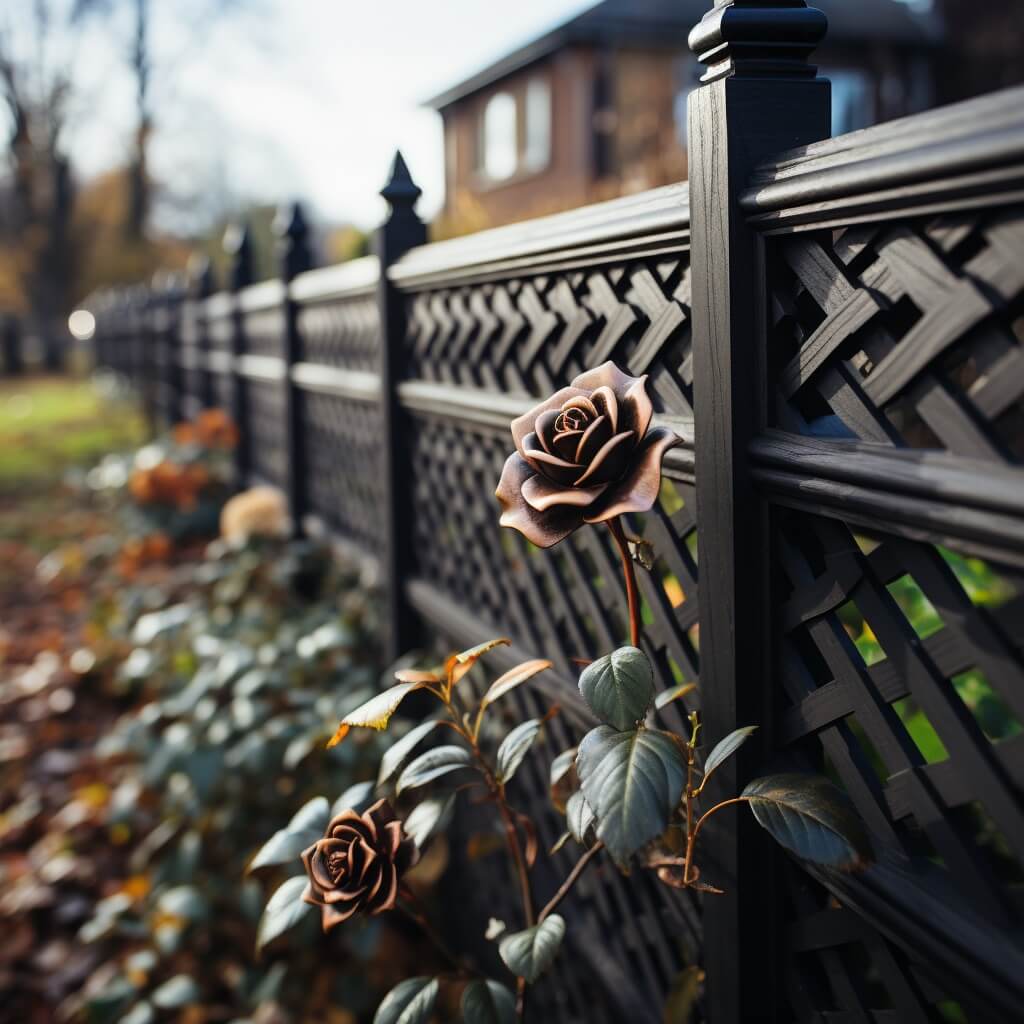
27 | DIY Horizontal Slat Fence
Modern, sleek, and undeniably chic, the DIY horizontal slat fence is a testament to contemporary garden design. This fence style, characterized by its parallel wooden or metal slats, offers a clean and streamlined look, making it a favorite among homeowners with a penchant for minimalist aesthetics. Beyond its visual appeal, the horizontal orientation of the slats can create an illusion of extended space, making your garden appear wider and more expansive. The gaps between the slats ensure airflow and a subtle view, striking a harmonious balance between privacy and connectivity with the surroundings.
Crafting a DIY horizontal slat fence requires precision and a keen eye for detail. Begin by selecting quality materials; while hardwoods like cedar or teak offer a warm, natural finish, metal or composite materials can lend a more industrial edge. Ensure the slats are uniformly spaced, and consider varying their widths for a dynamic look. To protect the wood and enhance its grain, apply a sealant or stain, which also adds longevity. For those looking to elevate the design further, incorporate lighting fixtures between the slats or plant linear flowerbeds at the base. A DIY horizontal slat fence isn’t just a boundary; it’s a statement piece, a reflection of modern design principles rooted in functionality and elegance.
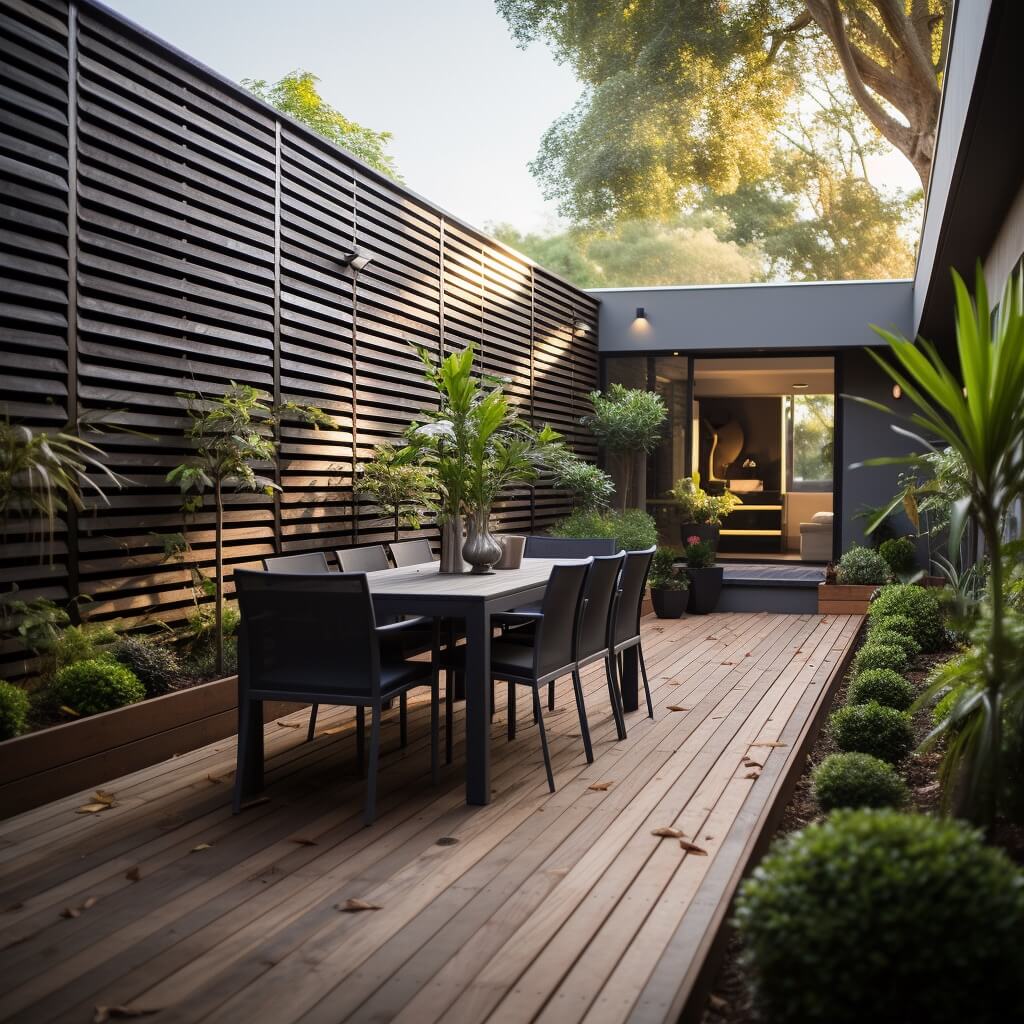
28 | Budget DIY Mesh Wire Fence
For those on a tight budget but still yearning for a reliable garden barrier, the DIY mesh wire fence emerges as a hero. Lightweight, cost-effective, and surprisingly versatile, mesh wire fencing offers a practical solution without compromising on functionality. Its fine grid-like structure ensures that even the smallest of critters are kept at bay, while still allowing for sunlight and rain to nourish your plants. The transparency of the mesh wire ensures that your garden remains the star of the show, with the fence playing a subtle yet essential supporting role.
Constructing a DIY mesh wire fence is refreshingly straightforward. Begin by planting sturdy posts at regular intervals around your garden’s perimeter. Stretch the mesh wire taut between these posts, securing it firmly with ties or staples. To prevent any potential rusting, opt for galvanized mesh wire or give it a coat of rust-resistant paint. For those looking to add a touch of creativity, intertwine climbing plants through the mesh or hang decorative garden accessories. Another idea is to frame sections of the mesh fence with wooden panels, creating a unique blend of rustic and industrial design.
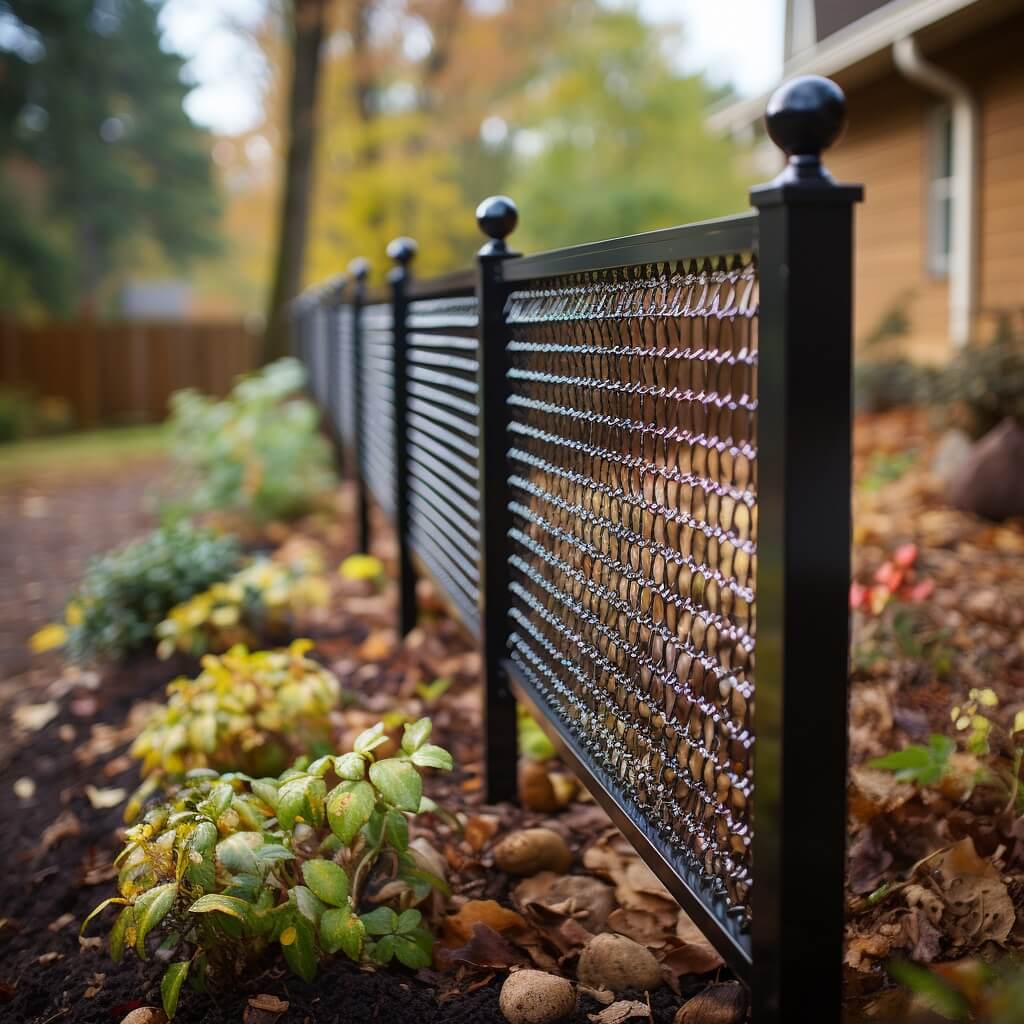
29 | DIY Wattle Fence with Metal Posts
Marrying the rustic charm of ancient fencing techniques with the strength of modern materials, the DIY wattle fence with metal posts is a fusion of old and new. Wattle fencing, with its interwoven branches or reeds, harks back to a time when fences were crafted from readily available natural materials. The weaving creates a dense, textured barrier, perfect for privacy and adding a touch of countryside allure to any garden. Introducing metal posts into this traditional design not only provides a stark contrast in materials but also ensures the fence’s longevity and sturdiness against the elements.
Creating a DIY wattle fence with metal posts is a journey of craftsmanship. Start by planting metal posts at intervals, ensuring they’re deeply anchored for stability. Between these posts, weave your chosen branches, twigs, or reeds, tightly packing them for a solid finish. The metal posts, resistant to rot and pests, offer a robust framework for the organic wattle, ensuring the fence remains upright and durable. To protect and enhance the natural look of the wattle, consider applying a light sealant. The juxtaposition of the metallic sheen of the posts with the earthy tones of the wattle creates a visually striking fence, a testament to the harmony that can be achieved when blending traditional and contemporary design elements.
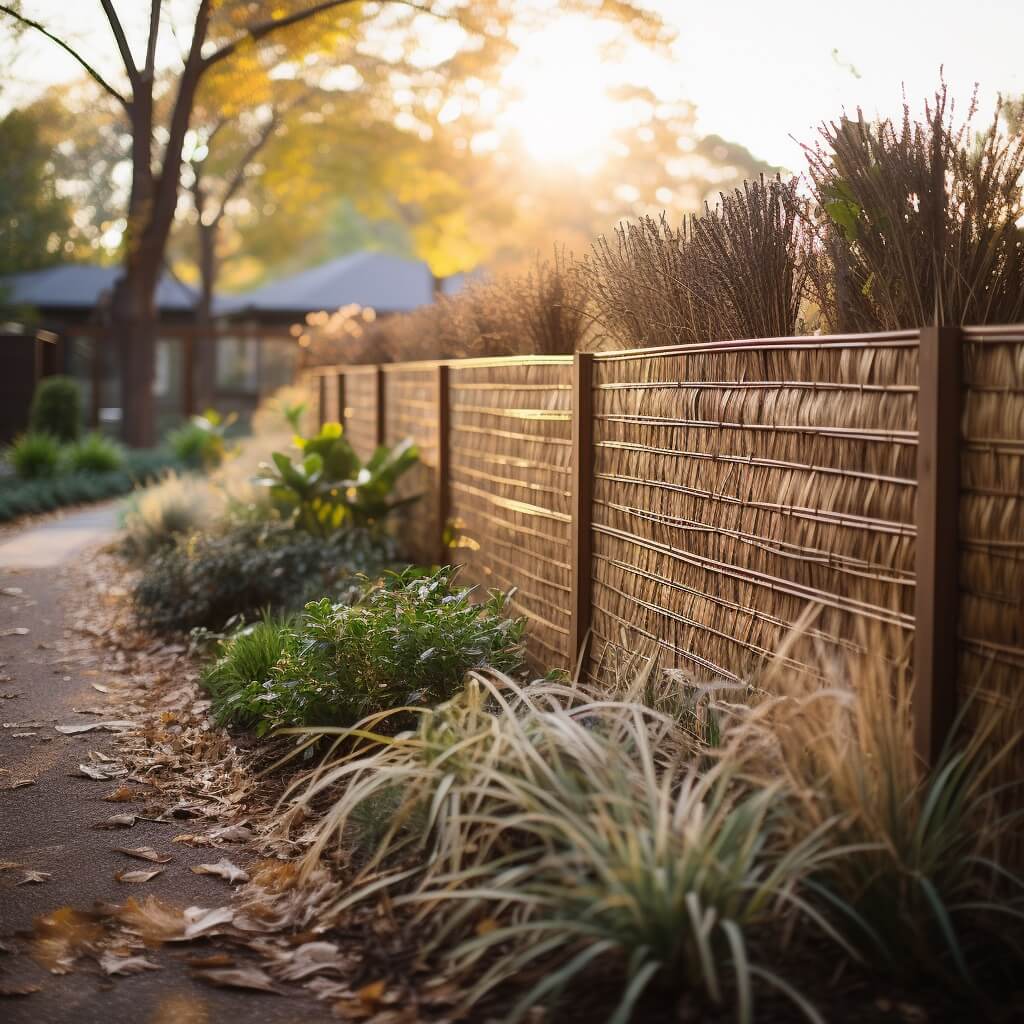
30 | DIY Chain Link Fence
Often underrated, the chain link fence is a testament to practicality and versatility. While it might not be the first choice for those seeking ornate designs, its strength and functionality make it a favorite for many homeowners. A DIY chain link fence offers a clear view of your garden’s splendor while ensuring security and boundary definition. Its minimalist design can be a blank slate, ready to be transformed with a touch of creativity. Whether you’re safeguarding a vegetable patch or enclosing a play area, this fence stands as a reliable guardian, merging transparency with protection.
The beauty of a chain link fence lies in its adaptability. You can elevate its appearance by weaving colorful slats through the links, creating patterns or even murals. Intertwine climbing plants like morning glories or passion vines, allowing nature to soften the metallic grid with bursts of color and greenery. For added privacy, consider attaching bamboo rolls or fabric screens. The installation process, while straightforward, requires precision to ensure tautness and stability. A DIY chain link fence offers a sturdy, affordable option that can be customized to showcase your garden’s distinct character.
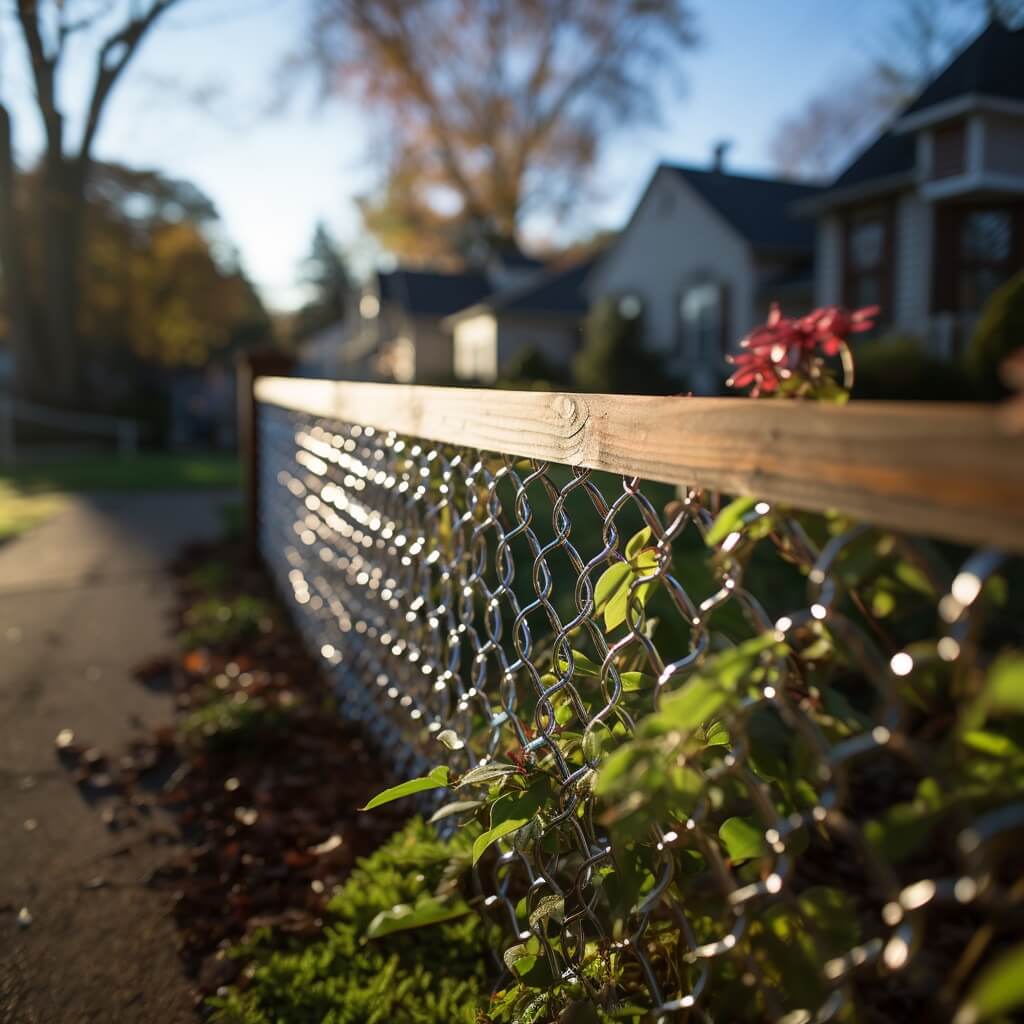
10 Tips for Building and Designing a DIY Garden Fence
Embarking on the journey of constructing your own garden fence is both exciting and rewarding. It’s not just about setting boundaries; it’s a canvas where functionality meets creativity.
Whether you’re aiming for privacy, protection, or purely aesthetic appeal, the right design and materials can make all the difference. As we delve into the intricacies of building and designing, let’s explore some key considerations and tips to ensure your fence stands out and stands strong.
1. Planning and Budgeting
- Blueprints: Draft a detailed plan of your fence, marking out measurements, gate placements, and any decorative elements. This will help you visualize the end result and ensure you purchase the correct amount of materials.
- Cost Estimation: Research material costs in advance. Factor in additional expenses like tools, paint, or sealants. Always allocate an extra 10% of your budget for unforeseen expenses.
2. Choosing Materials
- Climate Considerations: In humid areas, opt for moisture-resistant materials like cedar. For pest-prone regions, redwood or treated lumber can be beneficial.
- Aesthetic Appeal: Your fence material should complement your home’s exterior and garden. Consider staining or painting for added appeal.
3. Repurposed Items
- Sustainability: Reusing old materials reduces waste and can add a rustic charm. Old doors, window frames, or discarded metal sheets can be integrated creatively.
- Customization: Personalize repurposed items with paint, carvings, or by combining different materials for a unique look.
4. Ensuring Stability
- Foundation: The stability of your fence starts with its foundation. Use concrete footings for posts, especially for taller fences.
- Cross-Bracing: For added stability, especially in windy areas, consider using cross-bracing techniques.
5. Decorative Fencing
- Integrated Planters: Incorporate built-in planters or shelves for potted plants. This adds a touch of greenery and can act as a natural privacy screen.
- Lighting: Add solar or LED lights atop fence posts or along the fence for nighttime ambiance.
6. Fence Maintenance
- Regular Checks: Inspect your fence seasonally. Look for signs of rot, rust, or loose posts.
- Protection: Use weather-resistant sealants for wooden fences. For metal fences, consider rust-proof coatings.
7. Safety Precautions
- Digging Safely: Before digging post holes, check for underground utilities. This prevents accidents and service disruptions.
- Tool Safety: Always follow manufacturer guidelines when using tools. Store them safely out of children’s reach.
8. Local Regulations
- Permits: Some localities require permits for fence installations. Check with your local municipality or homeowners association.
- Boundary Lines: Ensure your fence is within your property lines. Consider a professional survey if unsure.
9. Gate Installation
- Ergonomics: Ensure the gate is of a comfortable width, especially if you need to move lawnmowers or wheelbarrows through.
- Security: Consider locks or security systems if security is a concern.
10. Eco-friendly Options
- Natural Treatments: Instead of chemical sealants, consider natural oils like linseed for wood protection.
- Recycling: At the end of its life, consider recycling fence materials or repurposing them for other garden projects.
Conclusion: Wrapping Up Garden Fence DIY Plans and Ideas
Building a garden fence from scratch is not just about marking boundaries; it’s about expressing creativity, ensuring security, and enhancing the beauty of your outdoor space.
Each fence style we’ve explored offers a unique charm and functionality. And if you’ve caught the DIY bug after this project, why not venture into other woodworking tasks?
There are countless DIY wooden box ideas out there that can complement your new fence, serving as planters, storage, or decorative elements. Remember, every DIY project you undertake not only adds value to your home but also enriches your crafting journey. Happy building!

